Featured CUB of the week:
Aramis Ramirez
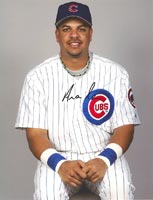
Ron Santo was traded by the Cubs in 1973, though the Cubs thought they had his replacement for another 10 years in Bill Madlock. However it would not work out that way as they had trouble finding a 3rd Baseman who could give them more than 2 seasons of production. However that changed after 30 long years when the Cubs acquired Aramis Ramirez from the Pirates. Although his tenure with the Cubs would end in a somewhat controversial manner he did give them quality production for most of the 9 seasons he spent in Chicago.
Aramis (Nin) Ramirez was born in the Dominican Republic in June 1978. He was originally signed by the Pirates as a 16 yo. and arrived in the majors in 1998 where he spent 3 years struggling at the plate and dealing with suggestions that he had some issues with having his heart in the game. This would not be the last time people would question his heart. But he seemed to find himself in 2001, hitting 34 HRs with 112 RBIs and .300 BA. Those numbers slipped significantly the next season to 18, 71 and .234. In 2003 he got off to a decent enough start, though questions continued to plague him as to how much he was into the game. It didnt help that the Pirates seemed to be headed nowhere. Then on July 23, hitting .280 with 12 HRs and 67 RBIs he was traded with Kenny Lofton to the Cubs for Jose Hernandez and Bobby Hill. The Cubs had been locked in a battle with Houston for the division lead most of the season. But 3rd Base had continued to be a vacuum and they needed a lead-off man following an injury to Corey Patterson, the hot shot prospect who had been playing the best ball of his career. Lofton would prove to be a godsend and Ramirez gave the Cubs the 3rd Baseman theyve been needing since Santos retirement as well as provide some protection for Sammy Sosa, who was having the last great season of his Cub career. A-Ram finished the season with 27, 106 and .279 and helped the Cubs win the division. In the playoffs Ramirez hit 4 HRs in the 2 series, though his slugging wasnt quite enough to help the Cubs overcome the Marlins comeback. In the wake of the disappointing finish to the 2003 season Aramis quickly established himself as one of the Cubs offensive leaders, hitting 36, 103 and a career high .318 in 2004, also scoring a career high 99 runs, earning a 10th place finish in MVP voting. He followed that with 31, 92, .302, then in 2006 career highs with 38 HRs and 119 RBIs. Then in 2007 and 2008 helped the Cubs win the division with 52 HRs, 212 RBIs and average around .300. This may have been the high water mark of Ramirez's career with the Cubs. In the playoffs he struggled as the Cubs were knocked out in the 1st round both years and the whispers began that maybe Aramis was not a great clutch player. Then the injury questions began in 2009. He spent a significant amount of time out with injuries, though he hit .317 with a career high OBP of .389. But he only had 15 homers and 65 RBIS as the Cubs showed signs that they were in need of changes. Then in 2010 he was plagued with injuries most of season, though he did not tell anyone the first 2 months of the season.Although he hit 25 HRs and 83 RBIs he had the lowest BA of his Cubs career, .241.In 2011 with a new manager and a GM increasingly under fire A-Ram put up decent numbers, 26, 93 and .306, though the team still struggled and he came under some heat when he rejected a trade in July. He was still a key offensive threat, but he was no longer the defensive presence he had been earlier in his career, because of injuries he refused to dive for balls or make the tougher plays. And there was an increasing feeling that he wouldnt step up his play when the team really needed it. In 2011 he struggled the first half and didnt really come on until the team was well out of contention. With the team now in rebuild mode it was felt that a change to a younger 3rd Baseman was needed. So the Cubs allowed Aramis to become a FA and he would sign with Milwaukee. He had a solid year, with 27 HRs, 105 RBIs(his most since 2008) and .306 BA as well as a career high 50 doubles. But again his defense had something to be desired and the injuries continued to be an issue. So, Im happy that he had a good year, but the change had to be made. 239 HRs in 9 years with 806 RBIs and .294 BA. He will be remembered for being the best 3rd Baseman of the Cubs since Ron Santo. Nothing to be ashamed about there. I and many other Cubs fans did appreciate A-Ram when he was at his best.
Greg Maddux
.jpg?timestamp=1358736812803)
If you talk to many Cubs fans and ask them what GM they hate the most Im willing to bet that most of the older fans will say Larry Himes. I know I still harbor a deep dislike for him. Next year Greg Maddux is up for election to the Hall of Fame and there is some question as to what cap Maddux will go in with, whether the Atlanta cap where he won all but one of his Cy Young Awards or the Cubs, where he started his career and returned to long enough to win his 300th game and earn his 3000th strikeout. You have Larry Himes to thank for that. Of all the great players traded away or let go to free agency, none was more painful to see happen more than the loss of Greg Maddux.
Gregory Alan Maddux was born in San Angelo, Texas in April 1966. His family moved to Las Vegas where he starred in high school and was drafted by the Cubs in 1984 where he was the part of a strong draft class that included Jamie Moyer and Jeff Pico. He moved up quickly and made his MLB debut in 1986 at the age of 20. His age would show as he would struggle for a year. Although he showed great promise early on, he would have trouble getting major league hitters out. But then, in 1988 a light went on and Mad Dog would start to find himself. Not blessed with great speed like other pitchers of his generation he must have realized that he would have to get by with his off speed stuff as well as his guile. He would win 18 games with a 3.18 ERA and 3 shutouts. The next season Maddux would play a key role is helping the Cubs winning the division with 19 wins and 2.95 ERA. His numbers would slip a bit the next 2 seasons but 1992 would be the coming of age for Greg as he won a league leading 20 wins with an impressive 2.18 ERA and a career high(up to this point) 199 strikeouts and won his first Cy Young Award. He would become a free agent following the season. It was thought that he would resign with the Cubs, but Himes hardly even made an effort to pursue him, although Maddux had expressed a desire to return. It is believed that Himes had no use for Gregs agent, the notorious Scott Boras. Although he had a rep for driving up the price of his clients, he never even had the opportunity because Himes refused to even offer his client a contract. After giving the Cubs a reasonable chance to resign him, Maddux gave up and wound up signing with Atlanta, joining Tom Glavine and John Smoltz to form one of the greatest 3 man rotation in the history of baseball. The numbers and achievements Maddux posted in Atlanta are amazing, especially if you consider he was doing it in an era where offensive numbers were rising each year. 5 of Gregs first 6 seasons saw an ERA under 2.50, 3 Cy Young Awards, a 107-42 W-L record, 14 shutouts, even a 200 strikeout season! And he was leading the league in CGs 3 times. Not to mention the defense. Maddux began a long run of Gold Gloves in 1990 and reached 13. Maddux also won a World Series with Atlanta in 1995 and was in the playoffs on yearly basis with Atlanta. Maddux continued to win in double figures throughout his career, 20 in all. With Atlanta alone he won 194 games, had 2.63 ERA and 21 Shutouts. By 2003 his numbers began to decline and Atlanta decided not to bring him back, which left the door open for the Cubs(with Himes long gone and Boras no longer his agent) to bring him back. So he resigned with the Cubs. In 2004 he won 16 games with an ERA around 4. Of course that year the Cubs just missed post season. The next season Maddux had a losing record for the first time since 1987 and an ERA over 4 again. By 2006 it was clear the decline was setting in, though he would win 300th game and earn his 3000th strikeout is his 2nd go-round with the Cubs. He was also trying for a rare achievement, that of 3000 strikeouts and fewer than 1000 walks. The only other Cub to do this was Fergie Jenkins. With the Cubs going nowhere in 2006 he would be dealt to the Dodgers, where he finished the season with 15 wins. Following the season he would sign with the Padres where he spent 2 years, then finally would be dealt back to the Dodgers in 2008 where he would finish his career. Maddux would end his playing career with 355 wins, placing him very high on the career list.
Following his retirement as a player, Maddux was briefly a member of the Cubs front office before joining the Texas Rangers organization, where brother Mike is the teams pitching coach. He is also going to be a coach for the USA team in the World Baseball Classic. As I mentioned Maddux is eligible for the HOF in 2014. It will be interesting to see what cap he goes in with.
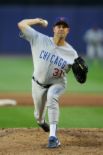
Ryne Sandberg ******Hall of Famer******
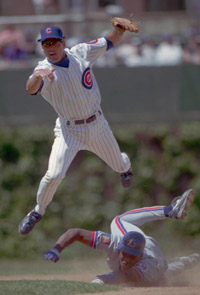
A couple of years ago Ryne Sandberg was interested in managing the Cubs, but when Jim Hendry turned him down many Cubs fans were outraged. To me that shows how high the esteem that he is held in by Cubs fans, that they thought he could bring his Hall of Fame ability to the managing job, even though there are few HOF players who have had HOF level managing careers. But that shows how beloved Ryne Sandberg is in Chicago. There are few players in Cubs history as loved as Ryno, with perhaps only Mr. Cub himself, Ernie Banks and Ron Santo more loved. His quiet demeanor and dedication have paid great dividends in putting together a great career.
Born on Sept.18, 1959 to a father who loved baseball so much that he was named after one-time Yankee reliever Ryne Duren, who was probaly best known for the thick glasses he wore. A brother was named after one time Phillie OFer Del Ennis. Ryne Dee Sandberg would be drafted in 1978 by a Phillies team whos farm director at the time was Dallas Green. Green would become manager of the Phillies a year later. Sandberg would move up the system quickly emerging as a major prospect. The Phillies would win a championship under Green in 1980. Meanwhile the Chicago Cubs would be undergoing a change in ownership in 1981 while Sandberg would be making his MLB debut with the Phillies. In October Green would be hired to take over as GM of the Cubs and he would almost immediately start bringing in former Phillies, so many that the media began referring to the Cubs as Philly West. But the defining moment of Greens tenure came on January 27, 1982 when he traded veteran SS Ivan DeJesus to the Phillies for longtime Phillies star SS Larry Bowa and Sandberg. In fact Green would not make the trade without Ryno. At first it was thought that he would be the heir apparent to Bowa, but to start the 1982 season he would be at 3rd base. Sandberg got off to a rough start in the major leagues, with only 1 hit in his first 23 ABs. But he would recover and finished with a respectable .271 BA, 32 SBs and scoring 103 runs. The next year he would put up similar numbers and earned his first Gold Glove for defensive superiority. A good year but unspectacular compared to what was coming. As the 1984 season began the Cubs hired Jim Frey to be their manager and he suggested that Ryno try to hit for a little more power. That little tip helped to transform his career. And on June 23 Sandberg would have a national coming out party as he hit 2 HRs off of ex-Cub hero Bruce Sutter on a nationally televised game. The game also helped propel the Cubs into the conversation as a pennant threat. From there Ryno put up inpressive numbers, just missing by one triple of becoming the first Cub to have 20 HRs, triples, doubles and SBs in the same season since Wildfire Schulte. Add 114 Runs, 200 hits, .314 BA and you have an MVP season. Thanks to Rynos big year the Cubs reached post season for the first time since 1945, though they would lose to San Diego in the playoffs. To this day I still think the Cubs couldve beaten the Tigers in the World Series. From there Sandberg put together some great seasons, topping .300 6 more times, scoring 100 runs 5 more times, double figures in HRs 11 times and not to mention the Gold Gloves, 11 in all, plus 10 All Star appearances. The Cubs would win another division in 1989, though once again the Cubs failed to get past the first round against the Giants. One of the high points of Rynos career came in 1990 as he hit a career high 40 HRs and 116 Runs and 100 RBIs. He even managed to steal 25 bases. He followed that with 2 more 26 Homer seasons. However by 1993 his numbers began to decline and in June 1994 hitting only .238 with 5 homers he shocked everyone when he announced his retirement. It would come out that Rynos struggles may have been related to marriage woes. It has been rumored that Cindy Sandberg may having been carrying on affairs with several of his Cubs teammates, including Mark Grace. After a divorce and remarriage, Sandberg returned to the Cubs as a player in 1996, hitting 25 HRs and 92 RBIs, although his BA was still down at .244. After one final season, Sandberg retired for good. He would earn election to the HOF in 2005. In 2007 Sandberg would take a managing job in the minors, with the thought that he would get a shot at the major league job someday. And he moved up the system rapidly, with only one losing season. Following the 2010 season in which he posted his best winning percentage at AAA, an opening for the Cubs managing job came up when Lou Piniella suddenly quit. Mike Quade, a long time manager and coach in the organization took over and posted a decent record. So when Ryno lobbied Hendry for the opening, he was turned down in order to rehire Quade. Many Cub fans were angry about the snub, though I think most of the anger was because the fans were becoming more and more disenchanted with Hendry.Although it wouldve been reasonable to expect Sandberg to take a coaching job first, still Ryno felt he was entitled to a fair shot. Feeling slighted he would take a job with the Phillies minor league system. So Sandberg has spent the last 2 seasons managing the Lehigh Valley Iron Pigs and will be joining the Phillies coaching staff in 2013. Ryno appears to be the heir apparent to current Phillie manager Charlie Manuel. Even though he is no longer associated with the Cubs he still has a huge following of fans in Chicago and there is still the hope that he will return to the organization someday. He still is the representative of playing the game the right way and showed how stand up he is by offering support for ex-teammate Andre Dawson getting in the Hall. That support may have helped speed up the process which saw the Hawk win eventual election to the Hall. I hope that someday Ryno returns to the Cubs. Ive always admired him and he was always one of my favorite players in the early 80s. He is one of the first class people in Cubs history and I wish him the best in Philadelphia.
Bill Buckner
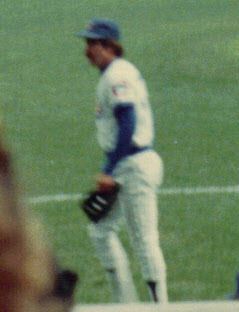
For many baseball fans Bill Buckner will forever be known as the guy who allowed a ground ball to go between his legs, winning a World Series for the Mets in 1986. However, to most Cubs fans in the early 1980s Billy Buck was the consummate pure hitter who regularly hit near .300, winning a batting title. True Cubs remember Buckner for being more than a gimpy 1st Baseman forever slighted by one unfortunate play.
William Joseph Buckner was born in Vallejo, California in 1949 and was drafted by the Dodgers in 1968 during one of the most fertile periods in team history. Buckner was blessed with great speed when he first came up, though his knees would take beating playing the outfield in Dodger Stadium. Buckner would make his debut in 1969, though he would struggle until 1971 when he hit a solid .277. He would hit .319 the next season and when the Dodgers made the World Series, Buckner hit .314. However, those knees would hinder Buckner his entire career. But with Steve Garvey ensconced at 1st Base, Buckner would have to stay in the outfield. But in 1976 during a game at Dodger Stadium, 2 fans somehow got on the field and attempted to set an American flag on fire. Cubs CF Rick Monday took matters into his own hands and swooped in to grab the flag and hand it off to Dodger coach Tommy Lasorda. The Dodgers were so impressed by Mondays action that they would trade for him, offering Ivan Dejesus and Buckner to the Cubs in what would turn out to be one of the best trades of Bob Kennedys tenure. Buckner would be a great addition to the Cubs lineup. He hit .284 though he did reach career highs with 11 HRs and 60 RBIs. Then in 1978 he would hit a career high .323. 1979 would see his average drop to .284, though he did top his career high in HRs with 14. However there would be some off field trouble when manager Herman Franks quit near the end of the season, taking potshots at several "chain" wearing players, including Buckner who Franks accused of being prima donnas. While a few of those players would be gone after the season, Buckner returned and at his best, winning a batting title by hitting .324. He would follow that with 2 more .300 seasons and had a 200 hit season as well, even cracking the 100 RBI level. 1983 saw the average drop to .280 but he still led the league in doubles again. But in 1984 the Cubs traded for outfielder Gary Matthews which meant Leon Durham had to find another position, which turned out to be 1st Base. With only 43 at bats, the Cubs finally moved Buckner, sending him to the Red Sox for pitcher Dennis Eckersley. The trade would turn out to be a great move for both teams. In 8 years with the Cubs Buckner hit .300 along with 81 homers, a batting title and an All Star game appearance. He would have some good years with the BoSox, reaching the 200 hit mark again in 1985. In 1986 he hit a career high 18 homers and drove in 100 runs a 2nd year in a row, despite seeing his average fall to .267. However, that season and his whole tenure in Boston would be overshadowed by that moment in the World Series. Even though there were other factors at play, such as Bob Stanley making some bad pitches, everyone would focus on the ball the went through Buckners legs. Buckner deserves better. He was released by the Sox in 1987 and signed by the Angels where his numbers continued to decline, then to the Royals. But in 1990 he would be resigned by Boston, but he had 8 hits in 43 at bats and finally was released mid-season. That would mark the end of his career as he moved to Montana in an attempt to distance himself from the negative publicity from the '86 Series. He recently returned to the Cubs organization to be a hitting coach for their minor league team in Boise.
Bill Buckner deserves more respect. He was one of the best pure hitters of his generation. Maybe hes not a Hall of Famer but he is one of the great Cubs of recent years. I know he gave me lots of excitement as a Cubs fan. I still remember seeing him at Wrigley Field he nearly hit a grand slam homer to win a game but for a few inches. I actually thought it was a homer. But at least he gave it his best shot, as he did for his entire career. Billy Buck, I salute you!
Fergie Jenkins *******Hall of Famer*******
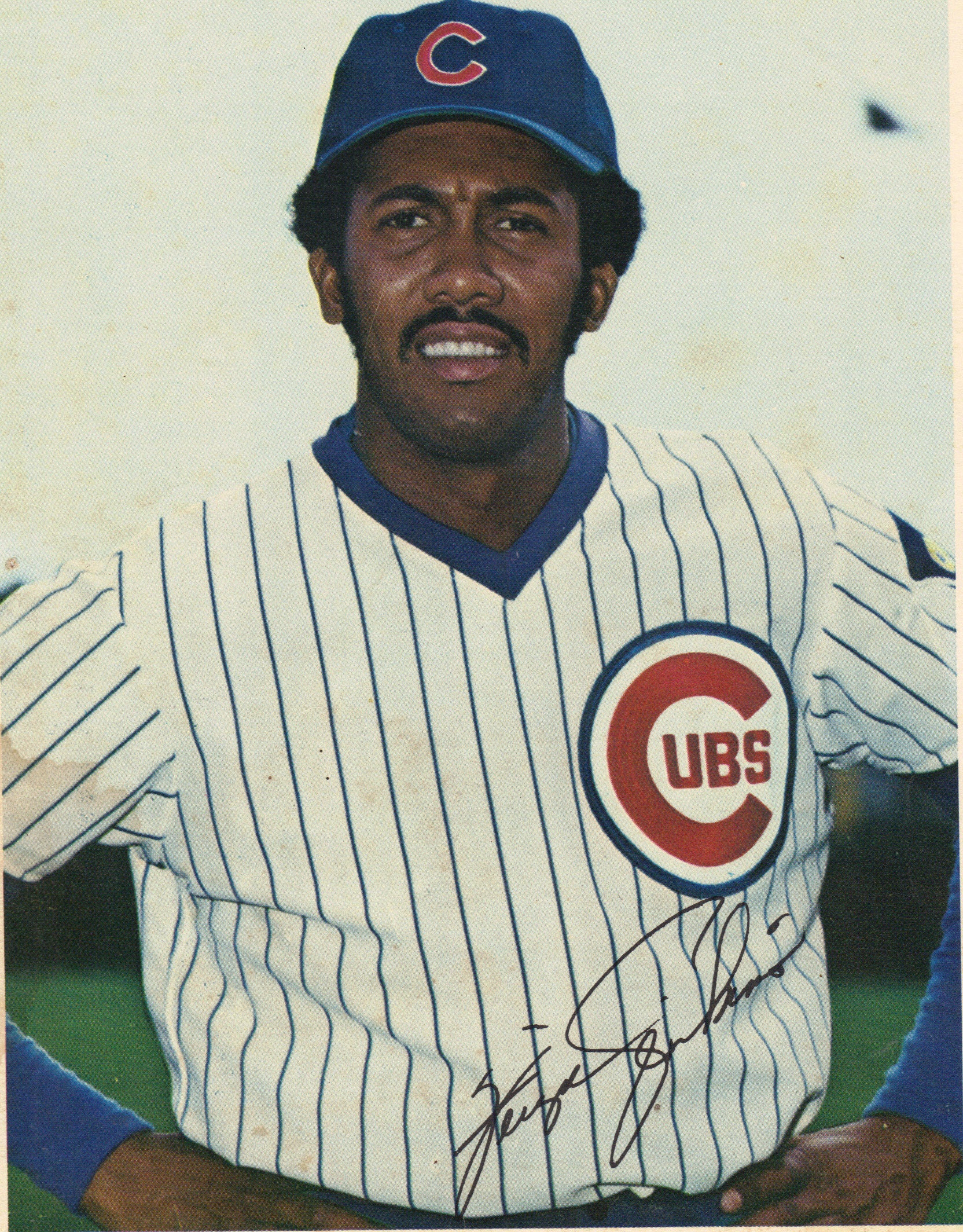
Ferguson Arthur Jenkins is probaly one of the 2 or 3 greatest pitchers in the history of the franchise. With 6 20 victory seasons, 3,000 SOs, a Cy Young award its hard to top. Born in Canada, he is perhaps the greatest baseball player to come from that side of the border. Yet, with all the honors from his native country, as well as over here it has not been easy. He has seen his share of hardships, especially in the years since his retirement. Through it all he has remained a beloved figure in Chicago.
Fergie was born in Chatham, Ontario in 1942 where he excelled in several sports, including basketball. In fact, Jenkins was such a talented basketball player, he would spend some time with the famous Harlem Globetrotters before joining the Cubs. In 1962 Fergie signed with the Phillies where he would work his way up their system, making his MLB debut in 1965 appearing 7 games as a reliever with an impressive 2.19 ERA. Clearly the Phillies were planning on using Fergie out of the bullpen. Then in 1966 Leo Durocher and the Cubs came calling, sending veteran starters Larry Jackson and Bob Buhl to the Phillies for Adolpho Phillips, John Herrnstein and Jenkins. Phillips was supposed to be the centerpiece of the deal, being called the "next" Willie Mays by Durocher and Herrnstein was the first of many attempts by Leo to force Ernie Banks out, except Herrnstein turned out to be a major bust. Fergie was just considered a throw-in, since they needed a pitcher to fill the void left by Buhl and Jackson. At first Fergie was just going to be a reliever with the Cubs(indeed he appeared in 48 games out of the bullpen that year), but the story goes that one day Leo was watching Fergie throw in the bullpen and was so impressed with his stuff that then and there he made him a starter. I dont know how much truth is in that story, but Leos decision to move him into the rotation would turn out to be one of the managers best in his career as Cubs skipper. After putting up a 3.31 ERA with 5 saves as a reliever, Fergie posted a 4-3 record with a 2.74 ERA that included a shutout. From there he would never look back. In 1967 when the Cubs shocked the baseball world by sneaking into 1st place in July, Fergie would be a big reason. He would appear in his first All Star game and ended up with a 20-13 record, 2.80 ERA, 236 SOs and 3 shutouts. In 1968 the Cubs as a whole fell off a bit, but Fergie was even more impressive, with 20 wins again, an ERA of 2.63 and 260 SOs, but his most famous achievement of the year was LOSING 5 games by a score of 1-0! But for just a little run support, he could have won 25 games that year!Then came 1969. For Fergie the season got off to disappointing start, but at the end of the season he would have 21 victories. Yet there is a slightly bitter taste about that season. It was Fergie who was pitching that fateful night in Shea Stadium when Don Young made the error that set off Ron Santo. And other pitchers had their moments in the sun, Bill Hands won 20 games and Ken Holtzman pitched a no-hitter. Still, Fergie was the ace, leading the league in SOs with 273 to go along with 7 shutouts and 3.21 ERA. The next year he upped his win total to 22 and SOs to 274, but the Cubs still fell short. Then came 1971, one of the greatest years by a Cubs pitcher in recent years, 24 wins, 263 SOs, 2.77 ERA and 3 more shutouts. Fergie won 20 games by early August, but cooled off late in the season. It earned him a Cy Young award. 1972 saw 20 more wins, 5 shutouts, though ERA was up a bit and SOs were down to 184. That isnt even counting the home runs. Fergie gave up a lot, but he hit a lot too, earning 13 during his career with the Cubs. However 1973 would mark the end for the 69 Era Cubs as Santo, Beckert, Hundley, Kessinger, Pappas and Fergie all went into decline at the same time. It was especially shocking to see Fergie struggling and the frustration finally boiled over into an embarrassing tantrum Jenkins threw late in the season as he got knocked out of a game then proceeded to pretty much end his Cubs career by tossing bats onto the playing field before making his final exit. Now Fergie was only 30 years old in 1973. He was somewhat younger than most of the other key players on the team. Why his numbers(14-16, 3.89, 170 SOs) declined so sharply is hard to figure, though considering his workload(300 Innings for 4 years in a row, 147 CGs in 7 years!) he may have been a little worn down, who knows. But the Cubs were cleaning house anyway, so Fergie was the first to go in return for Bill Madlock who looked to be a future superstar. A change of scenery is probaly what Fergie needed as he put up some of the best numbers of his career(25 wins, 2.82 ERA, 6 shutouts, 225 SOs) just missing out on his 2nd Cy Young. With a mediocre Texas team he would go 17-18 the next year. He would be traded to Boston the next year in what would prove to a difficult experience as he had trouble getting along with Red Sox and future Cubs manager Don Zimmer, at one point comparing him to a gerbil. His numbers in boston seem to bear this out as he went 22-21 with an uncharacteristic 3.47 ERA. He would be traded back to Texas following the 1977 season. He would respond with a very solid 18-8 season, 3.04 ERA and 4 shutouts. 16 more wins followed in 1979, but 1980 would be full of distractions as he would involved with a nasty incident at an airport when he was discovered to have a bag of cocaine on him. Jenkins gave what seems like a flimsy excuse in that he was "holding it for someone". But given that Fergie hasnt been, before or since, linked to drug use Im willing to give him the benefit of the doubt. But it did cast a shadow over his career for a while. He struggled to a 12-12 record that year and 5-8 in a strike shortened year in 1981. Meanwhile the Cubs had gone through major changes with Bill Wrigley III selling the team to the Tribune and Dallas Green taking over running the show and they seemed ready to let bygones be bygones as Fergie was available on the FA market. So the Cubs signed Jenkins to a 2 year deal and he responded by topping the staff with 14. Not a great thing to be proud of for the Cubs but good for Fergie. However by 1983 he began to decline to a 6-9 record with ERA over 4. While there were hopes that Fergie could be a part of the team that would eventually win the division and maybe have a shot at 300 wins, he really struggled in spring and found himself released. It was a major disappointment, but Fergie could look back at career he could be proud of. He finished his career with 3,000 SOs and fewer than 1,000 BBs. Only one other pitcher had done that and only 2 others have done it since he retired.
Following his retirement as a player he would get into coaching for Texas, but in 1988 he was faced with tragedy when his wife and young daughter were killed in an auto accident. But in 1991 he finally got in the HOF even though the drug bust probaly delayed it. More tragedy hit in 1992 when his fiancee committed suicide. He would remarry in 1993 and following enshrinement in the Canadian baseball HOF in 1987 he would eventually earn a unique honor when his country put him on his own stamp. As for his coaching career he would return to the Cubs as a pitching coach in 1995, though it would be short lived as the Cubs pitching was less than stellar and he would be fired in 1996. But the Cubs would honor him by retiring his No.31 in 2009. Today he spends most of his time working on his charity, the Fergie Jenkins Foundation and occasionally showing up to do the 7th inning stretch at Wrigley. He stands as an inspiration. Thanks for all you have given Cubs fans over the years, Fergie!
Bill Nicholson
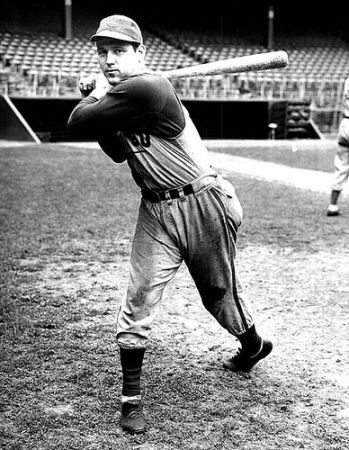
Bill "Swish" Nicholson was a dominant home run hitter who had his best seasons in the early to mid-40s with the Cubs. He was an early prototype for sluggers like Dave Kingman and Adam Dunn.
Nicholson was born in 1914 in Chestertown, Maryland. He attended Washington College, starring in 3 sports. An attempt to join the Naval Academy failed when he was found to be color blind. This would also get him out of serving in World War II. Following graduation he signed with the Philadelphia Athletics in 1936. However after 2 years of waiting, Nicholson would be traded to Washington, where he was helped by ex-Cub Kiki Cuyler who also recommended that the Cubs acquire him, which they did in 1939. He hit a homer in his first game as a Cub and things proceeded from there. Beginning in 1940 he would hit 20 homers for 5 years in a row. He was also known for having a strong throwing arm. After 3 strong years, Nicholson kicked in to high gear with 29 homers, 129 RBIs, .309 BA and 188 hits, all career highs. The next year he topped that with 33 HRs, 122 RBIs, 116 Runs, .391 OBP. He finished 2nd in the MVP voting to Marty Marion of St.Louis. But in the pennant winning year of 1945, Nicholsons numbers suddenly mysteriously declined. While he still scored 82 Runs and drove in 88, the rest of the numbers dropped significantly. The next 2 years saw his numbers fall even further. 1947 saw a comeback as he hit 26 homers and 75 RBIs. 1948 would be Nicholsons last with the Cubs and it also saw him hit one of the longest home runs in the history of Wrigley Field. 19 HRs and 67 RBIs and .261 marked the end of his Cubs career as he would be dealt to Philadelphia in the winter. 205 Homers and 833 RBIs in 10 years represent a very solid output. Nicholson would hit only 30 more homers over the last 5 years of his career. In 1950 he was diagnosed with diabetes and decided to retire. Even though he was considered a good influence in the clubhouse, he was never offered any coaching or managerial positions following his retirement as a player. He worked in real estate, ran a bowling alley and worked as a race track inspector before settling down on his farm in Chestertown. A life size statue of Bill was erected in Chestertowns town square in 1992. Weakened by the effects of diabetes, he passed away in 1996. Thanks again to SABR for filling in the blanks.
Dick Ellsworth
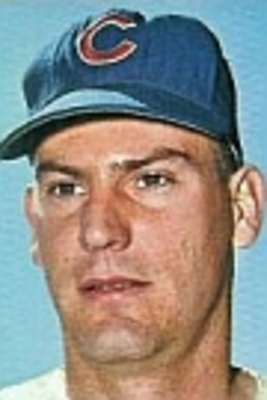
In 1966, the Topps Baseball card company printed a card of Dick Ellsworth, the only problem was that it wasnt a picture of Ellsworth, but a picture of a player who had been dead for 2 years, the late Kenny Hubbs. Somehow that seemed appropriate, since 1966 marked the final year of Ellsworths up and down career with the Cubs.
Ellsworth was born in Lusk, Wyoming, but by the time he was old enough to establish himself as a real pitching talent, the family had moved to Fresno, California. Dick was such a talented prospect that as soon as the Cubs signed him in 1958 they had him pitching against major leaguers in the annual Cubs-Sox game and soon he made his debut with the Cubs, but got rocked in 2 and half innings and was soon on his way to the minors. After 2 years of learning his craft he was back with the Cubs with a 7-13 W-L record, though a respectable(considering how bad the 1960 team was) 3.72 ERA. The next he was 10-11 with another decent sub 4 ERA. But in 1962 he seemed to take a step backwards by losing 20 games with an ERA over 5. Then in 1963, he put together an incredible season, which at the time appeared to be just the beginning of a great career, with 22 wins, 4 shut outs, 185 SOs and an impressive 2.11 ERA. He was seen as the key factor in the Cubs finishing over .500(82-80) for the first time since Charlie Grimm was manager. It was the first season under Bob Kennedy as the "head" coach in the wake of the embarrassing "college of coaches" experiment. Ellsworth was not a fan of the infamous "College" of rotating coaches and looking at his numbers in 1963 seems to bear this out. It appeared that Ellsworth was now ready to take his place among the elite in the NL, but it was not to be. He got off to a terrible start in 1964, due to tendinitis issues that would affect him for the remainder of his Cubs career. He went 14-18 with a 3.75 ERA and I have to believe that Ellsworths struggles probaly precipitated the Cubs need to add another starting pitcher, leading them to make the unfortunate Brock for Broglio trade. If they had a healthy and productive Ellsworth, perhaps they dont make that deal. In any case, Dicks troubles with the Cubs only got worse as he would go 22-37 the rest of his Cubs career, including an awful 22 loss season in 1966. Tired of waiting for him to get healthy, they finally traded him to the Phillies for Ray Culp, who would also prove to be frustrating to watch and he, too would eventually be dealt. Ironically, both Ellsworth and Culp both ended up on the Boston Red Sox(Ellsworth would be dealt to the BoSox in return for Gene Oliver who would wind up on the '69 Cubs!), where they would both win 16 games. Ellsworth finally seemed to be healthy and happy in his comeback, but he would be traded to Cleveland after only 2 games in 1969, in the deal that also sent Hawk Harrelson to the Indians. It was a strange trade all around, since Harrelson was also coming off the best year of HIS career, but I think he had some issues with Red Sox manager Dick Williams. In any case, Ellsworth was not happy about the trade and would struggle that season. After going 9-12 in little more than a year, Ellsworth would be sent to Milwaukee where he would finish his career in 1971. Following the end of his major league career Dick would return to Fresno where he started up a successful real estate business and in recent years has become the owner of a minor league baseball team. He says that he does not miss being in major league baseball and seems to be very happy. He had what Id call kind of a frustrating career with the Cubs, though he did have his moments. In 1963 he pitched a 1-hitter against the Phillies with future Cub Wes Covington getting the only hit on a bunt. Ellsworth didnt seem too thrilled that he bunted, but Im sure he realizes that you have to do what you have to do, even in a no-hit situation! And the entire 1963 is one he can be proud of.
Lon Warneke
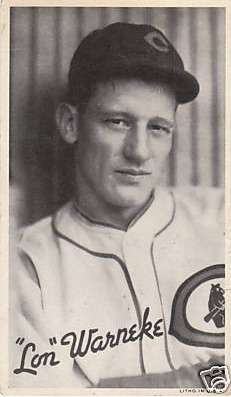
Lon Warneke, known as the "Arkansas Hummingbird" pitched for the Cubs in the 1930s and was very productive until the Cubs made the first of several bad trades with ther Cardinals and he remained productive for several years after leaving the Cubs then went on to a successful life after playing that included umpiring and a judgeship.
Warneke was born in Mount Ida, Arkansas and ended up signing with the Cubs and made his debut in 1930. After 20 games and 3.22 ERA, Warneke joined the starting staff of the pennant winning team in 1932, winning 22 games and leading the league in wins, ERA, percentage and shutouts. However he struggled in the World Series. After winning 18 the next year, he came back to win 22 in 1934 and 20 in 1935 in another pennant winning year. This time he pitched well in the series though the Cubs would lose to the Tigers. In his first 7 seasons he accumulated 16 shutouts, 100 wins and an ERA around 3, along with 4 All Star appearances. But in 1936 Boots Weber made the worst trade of his tenure as GM(I dont count the Dizzy Dean trade because its common knowledge that PK Wrigley engineered that deal and Weber was in fact opposed to it) by dealing Warneke to the Cards for 1st Baseman and pitcher Roy Parmelee. Collins would be a huge disappointment and Parmelee didnt add much at all. Meanwhile Warneke would continue to be productive, while not having any 20 win seasons, he did have win totals of 16, 17 and 18. and helped provide a bridge between the Gashouse Gang teams of the 30s and the Musial and Slaughter teams of the 40s. In fact, with Curt Davis, acquired in the Dean trade, the Cards had a significant amount of wins from ex-Cubs. In 1942, the Cubs reacquired Warneke and he would prove to be a useful reliever, but after 2 years he went into the military where he spent a year. He would return to the Cubs in 1945 for their pennant drive before finally retiring following the season. With Wrigleys help, he was able to stay in baseball as an umpire and he would become a NL umpire in 1949 and spent 7 years there. He would become the only person to appear in an All Star game as both a player and umpire. After being out of baseball for several seasons, he would be win a judgeship in 1962 where he would remain until 1972. In 1961 he would be inducted into the Arkansas Sports Hall of Fame. After several years of failing health he would suffer a heart attack and passed away in June 1976. Warneke is somewhat underrated and some people have suggested that he belongs in the Baseball Hall of Fame. He certainly has to be among the 20 top pitchers in Cubs history.
Gabby Hartnett ****HALL of FAMER****
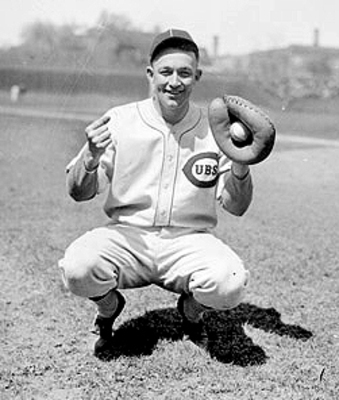
On Sept. 28, 1938, Gabby Hartnett hit a home run off of Pittsburgh pitcher Mace Brown in the growing darkness of Wrigley Field and forever enshrined himself in the hearts of Cubs fans and Cubs history, but he had already made a name for himself and was in the middle of a great career that would end with him going down as the greatest catcher in the history of the franchise. 6 All Star appearances, an MVP, a factor on 3 pennant winners(he was injured most of the season for one other pennant winner), respected enough to win a pennant as a manager and finally, a Hall of Famer, Charles Hartnett is truly one of the greatest players in the history of the Cubs. Hartnett also played a role in 4 of the most iconic moments of the 1930s.
1.The Babes Called Shot: Hartnett was the catcher as Ruth supposedly called his homer. Though Hartnett claims he was just counting off the pitches.
2.Carl Hubbell Strikes Out 5 future HOFers: Again, Hartnett was catching as Hubbell struck out Ruth, Gehrig, Foxx, Gehringer and Cronin.
3.Dizzy Dean breaks his toe at the 1937 All Star Game: Yes, Hartnett was catching as Earl Averill hits a line drive at Deans toe that eventually altered his career to the bad. Dean would end up playing for manager Hartnett on the Cubs.
4.The Homer in the Gloamin': this is the one moment where Hartnett was the key figure, hitting a home run that would win a pennant for the Cubs, more on that coming up....
Charles Leo Hartnett was born in Woonsocket, Rhode Island. Playing baseball, at an early age he was nicknamed Gabby as an ironic name in deference to his shy nature. He was discovered to have a great throwing arm when he became a catcher like his father had been. There is an unsubstantiated story that the Giants John McGraw was interested and sent Jesse Burkett to scout the young catcher and Burkett felt his hands were too small to be a major league catcher. The Cubs signed him and he joined them in 1922 to back up veteran Bob O'Farrell. When O'Farrell was injured in 1924, Hartnett took advantage of it, hitting 16 HRs and batting .299 and playing great defense. From there he would never look back. 24 homers in 1925 set the tone for him though he generally averaged around 14 homers, but he always hit for a good batting average. His career was briefly derailed in 1929 when his throwing arm suddenly went dead, forcing him out during a season that the Cubs would win a pennant. Fortunately his arm came back enough to help him hit .339 and a career high in homers and RBIs, runs and hits. Gabby continued to put up solid if unspectacular numbers, but it was his defense that kept him one of the best catchers in baseball. Hartnett didnt have a great year in 1932, but was good enough for the pennant winning Cubs. But he did hit .313 in the Series though they lost. 1934 would be one of his best seasons with 22 HRs and 90 RBIs, but it was his performance in the pennant year of 1935 that earned him an MVP. .344, 91 RBIs and a .404 OBP and another outstanding Series in a losing cause. He followed this with 3 more .300 seasons, but it was a somewhat down season in 1938 that Gabby etched his name in the annals of Cubs history. The team got off to a slow start and found themselves stumbling when Phil Wrigley fired Charlie Grimm as manager and installed Hartnett. They responded to the point that they were fighting for the pennant with Pittsburgh the last week of the season. They were a half game out on Sept. 28. The Pirates had taken a 5-3 lead into the bottom of the 8th when the Cubs answered with 2 runs. As the Cubs came to bat in the bottom of the ninth, as the darkness continued to grow, the umpires decided this would be the last inning of play. Hartnett stepped in against Mace Brown and Brown had an 0-2 count when Gabby hit a drive into the darkening bleachers, winning the game and the pennant with almost certainly the greatest walk off homer in Cubs history. It would be anticlimactic as the Yankees would have their way with the Cubs yet again. And Hartnetts numbers began to decline as age began to take its toll and the team began to decline as Wrigleys inability to rebuild affected the teams performance. Following the teams 75-79 5th place finish, Hartnett would be fired and replaced by Jimmie Wilson. It appears to have been a bitter split as Hartnett went to the Giants and would never wear a Cubs uniform or ever worked for the Cubs again, like Phil Cavaretta. Following several years as a minor league manager, Hartnett retired from baseball and went on to own a bowling alley, among other businesses in Lincolnwood. In the 60s he spent some time as a scout and enjoying his retirement, fishing and golfing. But after having his spleen removed in 1970, his health deteriorated and on Dec.20 he passed away.and is buried practically in my backyard in All Saints Cemetary in Des Plaines.Heres to you, Gabby, you are one of the greats
Larry Cheney
Larry Cheney was a pitcher with the Cubs in the mid-1910s having a 3 year stretch that was as impressive as any in the history of the team. Still a propensity for wildness and some trouble with a managers would doom his tenure in Chicago. Cheney was originally signed by the White Sox, but didnt receive much of an opportunity, though he did fall under the influence of the great Sox pitcher, Ed Walsh. After a stint with the Reds, Cheney would up on the Cubs where he finally got his chance and made the most of it, winning 26 games as a rookie in 1912. He would follow that up with 21 and 20 victory seasons, even leading the league in saves in 1913 and throwing 6 shut outs in 1914. However problems with new Cubs manager Roger Bresnahan assured that his days as a Cub were numbered and he would be traded to Brooklyn in 1915, following a disappointing season. He rebounded to post one of his best seasons in 1916, going 18-12, 5 shut outs and 1.92 ERA. However, though he played a big part in getting the Robins into the World Series, he was a nonentity in the Series. After 2 solid yet losing seasons, by 1919 Cheney was in decline and following stints in Boston and Philly, his major league career was over. After bouncing around the minors for three years, including a two-year stint in the Sally League in which he compiled a 42-11 record, Larry Cheney gave up baseball and devoted all of his time to operating an orange grove. He became bitter over the ensuing years when his aspirations to return to the game as a coach or scout never were fulfilled. Sometime in the 1960s, the old warrior completed a questionnaire sent to him by the Baseball Hall of Fame. Battling a case of pulmonary emphysema, Cheney wrote that he was retired and unable to work. The final entry on the questionnaire asked: "If you had to do it all over again, would you play professional baseball?" Cheney responded: "No." He died in Daytona Beach, Florida, on January 6, 1969. It makes you wonder why he became so bitter. He did set some records for wildness and pitched 13 innings in a game that would become at the time, the longest game in major league history. But its his 3 great seasons with the Cubs that will be remembered by Cub fans. Thanks again to the Society of Baseball Research for help in filling in the blanks.....check out SABR sometime, if you love baseball history like me!
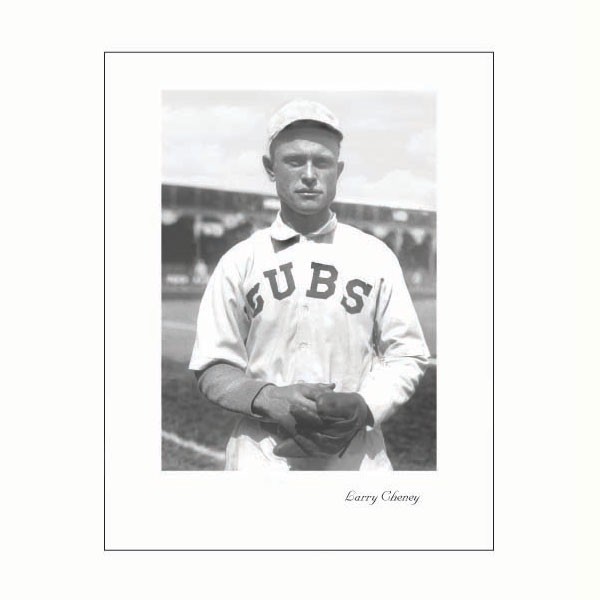
Bryan LaHair
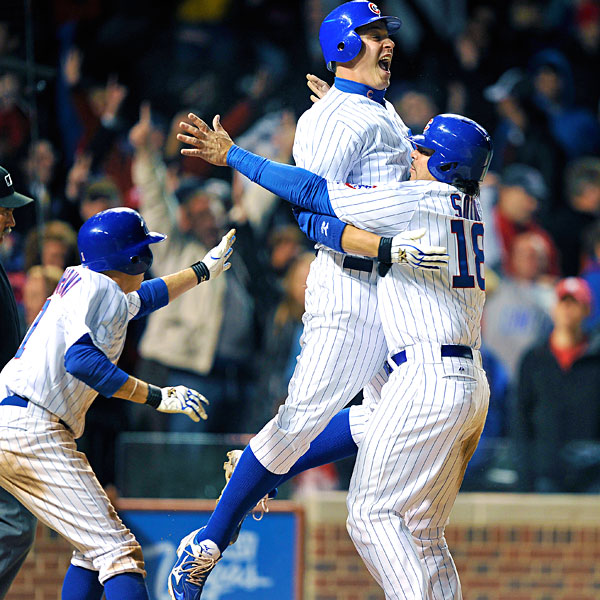
It happened on a night in early May in a game against defending World Champions St. Louis and their closer Jason Motte. Working Motte for a walk in an epic 12 pitch at bat, Bryan LaHair finally arrived as the latest Cub hero. An "Overnight Sensation" who took 10 years to make it. Following a season where he was the Minor League Player of the Year, LaHair had been impressive in a short stint in September. But when the Cubs acquired hot 1st Base prospect Anthony Rizzo, there were questions about whether LaHair would even come north with the team on Opening Day. However a solid spring earned him the starting job and Rizzo a ticket to the minors. and LaHair continues to solidify his status with the team.
Originally signed by the Seattle Mariners in 2002, LaHairs path to the majors was slow. Bryan finally reached the Mariners in 2008 where he struggled and returned to the minors. He was acquired by the Cubs in 2009. A few more years in the minors and LaHair is back. I think he is here to stay. He hits to every field, he has clearly learned to utilize his experience. Even if the pitchers catch up to him I think he is more than capable of making the adjustments neccesary. It remains to be seen what happens when Rizzo arrives, if LaHair will be traded or moved to another position. I know Im looking forward to watching the progress.
Jimmy Sheckard
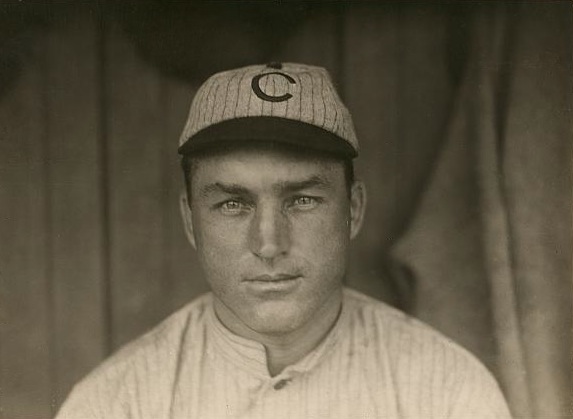
Jimmy Sheckard, as a member of the 3 "S's" in the outfield of the Golden Age Cubs, played a key role on those teams as an outstanding defensive player, who, while not specializing in one area, was productive in all areas at some point in his career. He was also one of the real characters on those teams.
Born in Pennsylvania in 1878 and named after failed Presidential candidate Samuel James Tilden, Sheckard learned to play baseball at an early age and after making his way in the minor leagues, signed with Brooklyn in 1897, where he played shortstop and pretty much stunk at it so he was moved to the outfield where he would excel. He hit .277 in 1898 but would be dealt to Baltimore, playing for ro0kie manager John McGraw, stealing 77 bases and scoring 104 runs. He would return to Brooklyn the next year as a back up, but playing everyday in 1901 he hit a career high .354. After jumping to Baltimore the next year, he later changed his mind and he had 4 up and down seasons, one year hitting .332, the next only .239. In 1905 he hit .292, but only scored 58 runs, a low number for a guy who once scored 116. But in 1906, he was traded to the Cubs for outfielders Jack McCarthy and Billy Maloney, third-baseman Doc Casey, pitcher Buttons Briggs, and $2,000. It was a deal that put the final piece in place for the Cubs great run to 116 victories. Sheckard would contribute 90 runs scored and 30 SBs, though he hit only .262. Jimmy established himself as a team leader who excelled at irritating the opposition--he had a "quiet way of getting a rival's goat that has never been eclipsed," noted one sportswriter. In 1908 Sheckard nearly lost an eye due to his involvement in a melee with teammate Heinie Zimmerman in which Zimmerman threw a bottle of ammonia at Jimmy. He would be sidelined for several weeks as a result. He only hit .231 that season but offered a unique perspective on the famous Merkle incident. Sheckard always claimed that his good friend Artie Hofman, the center fielder, should receive as much credit as second-baseman Johnny Evers because it was Hofman who alertly made the throw to Evers for the crucial forceout., which if you look at most accounts of the incident is probaly true. It was around this time that Sheckard developed a reputation as a bit of a flake. He was also a member of a barbershop quartet with Hofman and pitcher Lew Ritchie. And there was also an incident in which Sheckard stopped in the middle of left field, whirled several times, threw his glove up in the air, and went over to the spot where it landed. Orval Overall, pitching for the Cubs that day, couldn't figure out why Sheckard was standing only a few feet from the left-field foul line and motioned for his outfielder to reposition himself. Sheckard refused. The next batter, Fred Clarke, hit a screaming line drive that went straight into Sheckard's glove. Jimmy told teammates that the scheme changed his luck in the field from that day forward. 1911 would be one of Sheckards best seasons, hitting .276, scoring 121 runs, however, with his average the Cubs dealt him away to St. Louis in 1913, from which he was dealt to the Reds where he ended his career as player in the big leagues. In 1917 he returned to the Cubs as a coach. During World War I he served as athletic director at the Great Lakes Naval Training Station, which sponsored 48 baseball teams with more than 2,000 players.
Following the war, Sheckard returned to Pennsylvania where managed semi pro teams and discovered Les Bell, a future Cub. "Jimmy was a fine man," Bell told researcher Greg Dubbs. "Very fundamental. Bunt, hit and run, stolen base, defense--the way he played the game from, what I've been told." Sheckard remained a character. "As a manager he wore white socks and a white shirt and was always chewing tobacco," Bell remembered. "He'd hitch his pants at the knees, sit himself down and spit away. Funniest damn thing I ever saw--by the end of a game those white socks were always a very distinctly brownish color." In his later years he would coach and Franklin & Marshall College, and even managed a minor league for a season. But after having lost his modest savings in the stock market crash, Sheckard would be down on his luck in the late 30s. He drove a milk truck for a while and by 1947 he was working as a gas station attendent when he was struck by a car and died. The city of Lancaster, Pa where he managed briefly erected a monument to his memory. Even though he is kind of a forgotten figure today, still his place in Cubs history is assured for his part in the greatest era in team history.
Once again, I want to acknowledge SABR for an interesting article on Sheckards career that I used to fill in some of the gaps.
Adrian "Cap" Anson
This week we celebrate the 160th birthday of the first Chicago National League Baseball teams superstar.
Adrian "Cap" Anson was probaly the first true superstar in the history of the Cubs. He was the first player in major league history to get 3,000(albeit most of those hits coming at a time when there were different scoring rules, but hits nevertheless), he managed the Chicago Nationals for 19 seasons, played a remarkable 27 seasons in all. Yet he was also responsible for racist policies that kept blacks out of baseball for more than 60 years. Still he was the face of the Chicago National League ballclub almost from the time of its inception as the Chicago White Stockings until just before they became known as the Cubs. You cant write the history of the Cubs without Cap Anson. Thats how important he is.
He was born in Marshalltown, Iowa in 1852, attended Notre Dame and the University of Iowa. He joined the Rockford Forest Cities of the National Association in 1871 as a 3rd Baseman, though he played all over the place as well, hitting .325. The next season he joined the Philadelphia As where he hit .415 with an OBP of .455! He would spend the next 3 years in Philadelphia as well. He also developed a friendship with pitcher Albert Spalding during a tour of Europe. Following the 1875 season, he was recruited by William Hulbert who was starting a new league that was supposed to be a cleaner league than the NA, which was overrun by shady gambling types and brawls and just a negative image. Anson hit .356 in 66 games that first season with Spalding as his manager. After one more season as manager, Spalding moved into the front office and Bob(Death to Flying Things) Ferguson took over. He didnt exactly set the world on fire, but Anson played the outfield and hit .341. Then in 1879 Anson was named manager and moved to 1st Base and the team didnt look back. After a 4th place finish, the next season the White Stockings went on a run, winning 3 pennants in a row, with a 2nd place and 5th place finish before starting another run in 1885 and 86. They played in the first 2 unofficial World Series with St. Louis, tying one year, losing the next, both very controversial(one of these days, Im going to go in depth on these Series)The next 5 years were either 2nd or 3rd. It was during this successful period that Moses and Fleetwood Walker, 2 African American brothers began playing in the National League. However, when the White Stockings were scheduled to play them, Anson refused to take the field until they were removed from the game. No one in the League office took any action to block Anson and it became part of an unwritten policy not to allow any African Americans to play in league games. This shameful policy would continue through League Presidents and Commissioners, no one showed any guts to challenge the policy until in the early 40s Bill Veeck, Jr tried to buy the Phillies and load it with African Americans. It wasnt until after the death of the first Commissioner, Kenesaw Mountain Landis that Branch Rickey was able to sign Jackie Robinson and bring him to the majors in 1947 and was backed by Happy Chandlers courageous decision to allow it. While its easy to blame Anson solely, the truth is no one in baseball at the time tried to challenge it, so they share as much of the blame as Anson. Of course, you have to remember too, that this was less than 20 years after the Civil War and the Emancipation Proclamation and I think there were a lot of people who just werent used to the idea that black people could play baseball just as well as whites. So in a way, Anson was just a product of the times. Does that make it right, no, but I think you have to appreciate it from his point of view. Following that season, Anson, a confirmed tea totaler had gotten sick of the carousing and drinking of characters like King Kelly and John Clarkson and began to trade them off. The bad part was that the team would decline, though he did bring in so many young players, everyone began referrring to the team as the Chicago Colts, a name that would stick for the remainder of Ansons tenure as manager. Anson would continue as manager throughout the next 10 years. In 1890, Spalding began a World Tour involving many of the best players of the day including Anson.
They toured many countries in Europe and the Middle East, including Egypt, Japan and England, in hopes of popularizing this very American sport, though it was not as successful it was hoped. It would take another 60 years for it to catch on in Japan and, frankly, England has its cricket and soccer and has never really been interested. It was during this trip that Anson had hoped he would receive Spaldings blessing on Anson getting a piece of ownership in the Chicagos. That would never materialize and this snub would be only the beginning of the end of their friendship. Returning home, Anson would be faced with a decline in the teams fortunes, for the remainder of his tenure they would never get higher than 2nd place. Ansons numbers declined a bit, but he underwent a rebirth around 1893 where he posted 4 more .300 seasons. However, by 1897 the writing was on the wall for the 45 yo as his average fell to .285 and the Chicago Colts fell to 9th place. Anson would be fired at the end of the season. After one final season managing the New York Giants, Anson would retire from baseball. His relationship with Spalding completely eroded when Anson attempted to buy a team in Western League and move it to the South Side. However, Spalding used his influence to block that move and forever split from his long time manager. Ironically, the move that Anson tried to make in the National League would be pulled off by former St. Louis manager Charlie Comiskey years later when he helped form the American League with Ban Johnson. In his later years Anson would be prominent in Chicago politics, working as County Clerk. However, after losing that office, Anson would appear in a vaudeville show with his daughters. He also formed a semi-pro baseball team late in life. But he would never return to the sport or the team that made him one of the first baseball icons. Anson would pass away on April 14, 1922 and be buried at Oak Woods Cemetary in Chicago. 
If you are interested in more details about Ansons life, check out this excellent article from the good folks of SABR: http://sabr.org/bioproj/person/9b42f875
Ryan Dempster
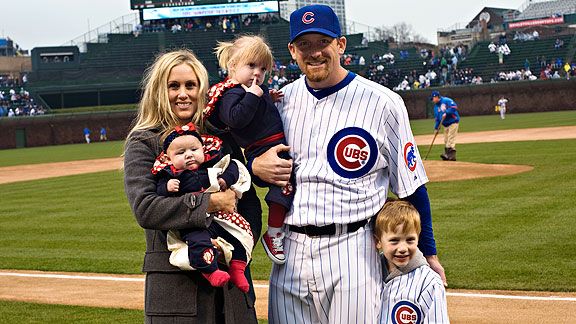
To say that Ryan Dempster has seen his share of adversity is putting it lightly. Following his arrival as one of the hot shot young pitchers with Florida, he was injured early on and nearly saw his career end, until the Cubs gave him a new chance to succeed. Then he watched as his baby daughter struggled with a rare disease and tried not to let it affect his pitching. In 2011 he faced more problems as the team floundered and found himself in the middle of a controversy that shed new light on the tough year Mike Quade had as manager. That Ryan is still here and still expected to be one of the key starters is a tribute to his toughness and his leadership ability. Dempster is second on the team in seniority behind Kerry Wood and well respected in the clubhouse. He is known for the generous work he does in the community and yet he is also considered one of the true characters of the team. His Harry Caray impression is considered one of the best, even though Harry was gone long before Demp ever arrived in Chicago. And he has been known to dress up as Captain America, usually for a good cause. So here is Ryan Dempster, a truly unique member of the Cubs.
Born in Canada, Dempster was originally signed by Texas, traded to Florida a year later, the first in group of talented young pitchers that would include AJ Burnett, Josh Beckett and Dontrelle Willis. He struggled early on, but by 2000 he won 14 games and struck out 209 with a solid 3.66 ERA. He won 15 the next year, but all his other numbers declined. It wasnt long afterwards that he developed arm problems and found himself traded to the Reds in 2002. Following a terrible 3-7, 6ERA plus season he had to undergo Tommy John surgery and found himself released by the Reds. On January 24, 2004 Dempster signed with the Cubs. It would turn out to be one of Jim Hendrys best moves. After rehapping in the middle of the season, Dempster was able to return in August and managed to appear in 23 games, winning one and saving 2 for a 3.92 ERA. For 2005, Dempster would be named the Cubs closer, with the idea that it would take some strain off his arm. He would save 33 games with a 3.13 ERA, which was actually a career best for him. All in all, Dempster would save 87 games with the Cubs. However, in 2006 and 2007 his ERA was barely under 5. For 2008, he would be returned to the starting rotation where he responded with the best year of his career, winning 17 and an ERA of 2.96 and 187 Strikeouts, making the All Star team in the process. Then, just as he was at the top of his profession, more adversity would affect his career.
In 2009, Ryan and his wife welcomed a baby daughter, however, it was not all joy as Riley Dempster was diagnosed with DiGeorge syndrome, a developmental disorder caused by a defective chromosome. She requires nearly constant medical attention. Her digestive system had been affected. Unable to swallow, Riley spends mealtime tethered to a feeding tube, while another tube in her tiny throat allows for the draining of built-up secretions that could seep into her lungs and impair breathing. It was very difficult period and it clearly affected his performance as he went 11-9 with an ERA nearly a run higher than the year before. He would start a foundation to help people in similar situations. Meanwhile he did bounce back somewhat in 1010 with 15 wins and 208 strikeouts, though his ERA was still nearly 4. 2011 saw his numbers decline again to 10-15 and 4.80 ERA as the team struggled and he found himself the subject of some controversy due to a confrontation he had with manager Mike Quade. Because of Dempsters stature as one of the team leaders, this was seen as a complete loss of confidence by the players in Quades ability to lead. With all the changes over the winter, Dempster remains a constant, possibly because of his leadership more than his pitching. The hope is that he will bounce back this season. His very first outing of 2012 gives confidence that he will, pitching 7 solid innings, only allowing 2 hits and a run. Unfortunately the bullpen would blow the lead, keeping him from the win column, still its a good start. Lets hope its just the first of many more starts by the cagey veteran.
Sammy Sosa
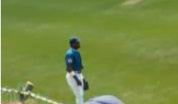
Smiling, cocky, confident, charismatic, Sammy Sosa was for a brief period as big a hero, as big a star, as huge a national figure as Ernie Banks that many people considered him the new Mr. Cub. Whats shocking is how quickly he fell from grace to the point where many Cub fans today consider him a pariah, a non entity, a truly hated figured. In a way, he is as much a symbol of all the negative aspects of the game in recent years as he was the symbol of how good the game seemed to be back in 1998.
Sammy Sosa was originally signed by the Texas Rangers as a 16 year old, blessed with all of the 5 tools you need to be a superstar: great speed, great power, a great throwing arm, great defensive ability and an ability to hit for a high average. But he was also very cocky and sure of himself and somewhat undisciplined and not always interested in listening to coaches or managers. He reached the majors with Texas in 1989, where he hit .238 with 1 homers in 25 games. Then on July 29 he was traded to the White Sox, where the man who signed him, Larry Himes, was now GM of the White Sox. He hit .273 with the Sox showing flashes of his potential. However his 2 and half years with the Sox would be a frustrating experience for Sox fans who were hoping to see the Ruben Sierra-like ability that he had. He would hit .227 with 28 homers in the 2 plus years he spent on the South Side. There were questions as to how motivated Sammy was to play on a day to day basis. Meanwhile by 1992 Himes had moved on to the Cubs as their GM and while Himes is best known for allowing Greg Maddux and Andre Dawson to leave, he did pull off a trade to bring Sosa to the South Side. The Cubs had made a tremendous mistake in signing OF George Bell to a contract and were now looking to get rid of him. Dumping the disappointing Bell for an unproven, but talented Sosa seemed like a fair trade-off, so on March 30, 1992, the Cubs traded Bell for P Ken Patterson and Sosa. In the early going, the trade didnt really seem to offer new motivation for Sammy as while he a respectable .263, the power was missing as he hit only 8 homers in 67 games. He did steal 15 bases, but considering that he had stolen 35 2 years earlier it was kind of disappointing. However in 1993, with Jim Lefebvre as manager the Cubs actually finished over .500 and Sammy finally seemed to breakthrough with 33 homers, 36 steals and a .261 average. He also scored 92 runs. Then. in 1994 it looked like Sammy was finally growing into a superstar when the strike came. At the time Sosa was hitting .300, 25 homers, 22 steals and even a .339 OBP. Following the strike Sosa picked up where he left off, hitting 36 homers again and topping 100 RBIs for the first time. Then in 1996, in a season which I finally returned to being a Cubs fan after quitting because of the strike, Sosa seemed well on his way to making a run at the home run record, when he broke his hand, still managing 40 homers and 100 RBIs by late July. Then in 1997, while he hit 36 again with 119 RBIs with 90 runs scored it still felt like a comedown from the previous year and when Sammy signed a huge contract, he was seen as an overpaid player. Perhaps the criticism could be seen as the reason Sosa may have started using steroids, its hard to say, but when you look at the big jump in his numbers, this couldve been the point that he began using. More on the steroids, but back to 1998, at the time it was an extraordinary year. Mark McGwire would engage Sosa in one the most exciting races in baseball history and it wasnt even team vs team. Everyone knows about Big Mac and the 72 homers, meanwhile Sammy still hit 66, very impressive. Everyone got caught up in it, how could you not, it was fun to watch. But what was really impressive were the OTHER numbers Sammy put up:.308 average(career high), 134 runs scored(career high), 198 hits(career high), 158 RBIs(career high), .377 OBP(career high). Even the 73 walks he took were a career high. You can talk about the homers until the cows come home, but 1998 is the year Sammy Sosa learned how to be a super star. Finally, he earned a well deserved MVP award, outpolling a guy who hit 72 homers, not bad! Now McGwire did go through some controversy over using Andro, a muscle powder that was banned by baseball, but McGwire stopped using it and that seemed to be the end of it. But the thought of players using performance enhancing drugs was now out there and rumors would begin to surface about some players using steroids. How do you top the season Sammy had? Well, you cant, but Sosa tried, with 63 homers, 141 RBIs, 114 Runs, .288 average, still superstar type numbers. In 2000, his homer numbers took a tumble to 50, possibly due to the controversy that would begin to change the publics perception of the charismatic star. Sammy would shatter a bat in a game and when the pieces were examined, cork was discovered in it. Cork is an enhancement that baseball frowns upon and Sosa would be suspended. He claimed that the bat was only used for BP and he had grabbed it by accident. The league checked other bats Sammy had in the HOF and they were found to be clean. Some of the fans began to question his excuse for the incident and other questions began to grow about other possible enhancements. In the time since 1998, steroids were suddenly beginning to pop up. Probaly the first big name to be implicated was Ken Caminiti, a former Houston Astro 3rd Baseman who won the MVP in 1988. Caminiti admitted using steroids, saying that it had affected his health. Caminiti eventually committed suicide. Now there were rumors of steroid use popping up all over. Meanwhile, in 2001, Sammy seemed to return to where he was with 64 homers, with career highs in runs scored(146), BA(.328), RBIs(160), BBs(116) and OBP(.437). And he seemed to redeem himself as a heroic figure in the days following 9/11, in the first game back he charged out to his position in RF waving a small American flag! The Wrigley faithful ate it up, of course. And 2001 was the year Barry Bonds broke McGwires HR record with 73. However, already rumors had surfaced about a company named Balco, that they may have supplied Bonds with PEDs, a development which cast a cloud over the record. Still, with Sammy it was business as usual. 2002, however his power numbers were down, though he did hit a solid .288, scoring 122 runs. Then 2003, and the Cubs were in an exciting pennant race. Sammys numbers were all way down as they didnt seem to need him hitting 60 homers anymore. In the playoffs Sammy did his best but the Cubs still lost to Florida in a controversial series. By 2004, his numbers had declined sharply to 35 homers, 80RBis, .253 BA, 69 runs scored. Plus there was tension between Sosa and manager Dusty Baker, that culminated in a tantrum on the final day of the season, when Sammy walked out of the ball park in the middle, an unforgivable crime to most baseball fans. On that day Sammy lost me as a supporter, because he looked like a selfish child. While I put a lot of blame on Baker, theres still no excuse for walking out on your teammates. Its just not cool. He would never playt for the Cubs again and would be traded to Baltimore, where he 14 homers on a .221 average before supposedly retiring.
In 2005, Sosa was asked to testify before the House committee investigating steroids. This was the hearing that featured McGwire taking the 5th and Rafael Palmiero wagging his finger in denial just months before testing positive for PEDs. Sammy chose to speak in Spanish, which put a lot of people off. Now there would be questions about whether Sammy was using. Meanwhile Sammy returned after a year off to hit his final 21 homers in the major leagues. So from there Sammy Sosa would ride off into the sunset, waiting for a call from Cooperstown that may never come.
While it is my intention to keep this a positive website, it is awfully hard to do a profile of Sammy Sosa without mentioning steroids, for good or for bad, fairly or unfairly it is a part of his legacy. And when you look at Sosas home run numbers between 1997-2003, it is hard not to see the big sudden jump. Of course, looking at his other numbers, maybe it was just a byproduct, but when you consider everything going on during this period, its easy to see why Sammy mightve been tempted. He signs the big contract in 1997 then faces huge criticism, hes dealing with a manager giving him a hard time(Don Baylor). Plus you have a personality who seemed born to entertain. I honestly believe that if Sosa hadnt been a baseball player he wouldve become a movie star. It is possible that Sammy justified using PEDs because it enhanced his ability to entertain at the highest level. Unlike some players who were more motivated by money or players who were motivated by pure ego, with Sammy I think it was different. I think he really enjoyed entertaining the fans and while there is a bit of an ego factor with him, I dont think it was his real motivation. He loved the attention, but I think he was legitimately enjoying it. A lot of his actions were probaly calculated to get a reaction, most notably his little post-9/11 show. He comes out waving a flag, taking advantage of the patriotic fervor sweeping the country at the time, makes people feel good about the country, giving them comfort at a time everyone was pretty much in mourning. That was not necessarily a bad thing. Then when he testified before Congress, his little speech in Spanish was clearly calculated to draw sympathy to the fact that he is the member of a minority in this country, however, this time it backfired because it made him sound like he was trying to hide something.
Im not going to go deep into the steroids issue here, because that would take more space and distract from what I want to say about Sammy Sosa. Perhaps we shouldnt judge Sammy too harshly. After all, he was only one of dozens of players who were also implicated in steroid use. And while he was supposedly implicated in a failed drug test from 2002, as of now his name has never been conclusively linked to that drug test, its still only a rumor.
Is Sammy Sosa a Hall of Famer? Well, he had a string of great seasons between 1998-2003, 6 years, hes a member of the 600 homer club, but still. Without the steroids cloud he would probaly be welcomed because 600 homers is still a rare feat, but its hard to overlook the steroids issue. And he is still pretty much a non-entity with most Cub fans and will probaly remain so. If Mark McGwire continues to be on the outside looking in, then the chances are that Sosa will be sharing a seat at the same window. If Sammy were to come clean, I think some Cub fans will welcome him back with open arms, I think I would. Though I hated the way he left, its hard to stay angry at the guy.
Lee Smith
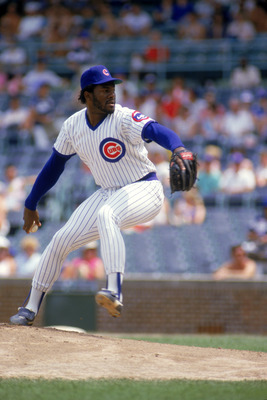
Lee Smith was one of the hardest throwing and most productive closers in the history who still owns the all time franchise record for saves and the trade that sent him off to Boston is still one of the worst trades in team history, being that the Cubs spent many years trying to fill his shoes and even now is not safely filled. Coming up in 1980, he was originally groomed to be a starter, though he had more success coming out of the bullpen. In 1982 he had 5 starts but mostly struggled in that role. When he began being used as the closer he did very well, earning 15 saves after July 23rd. In 1983 the job was his and his alone and he began a string of impressive seasons, following an impressive 1.65 ERA in 1982 with 29 saves, that included 4 straight 30 save seasons. He would be a key reason behind the Cubs division title in 1984. Standing at 6 ft 5, he was a very intimidating presence to the other teams batters. Perhaps the one knock on Smith was his ERA, especially during the 30 save streak, around 3.00, it is not the dominant number you would expect. But because those Cubs teams were strong run scorers, you could get by with that ERA. If you were there you remember how good he could be. I was just glad he was on our side. But that ERA was too high for Jim Frey. The very first trade Frey made after taking over as GM was trading Smith to Boston for Al Nipper and Calvin Schiraldi. Neither pitcher would be productive and both would be gone by the time the Cubs reached post season in 1989. It was a terrible trade no matter how you look at it. The Cubs would be forever looking to find a replacement for Smith. Even today with Carlos Marmol still a question mark, they have never really found an adequate long term replacement for Smith.
Smith would remain a productive major league closer through the 1995 season, appearing with Boston, St.Louis, Yankees, Baltimore, California, finally finishing his career with the Reds and Montreal. When he retired in 1998, he was the all time record holder in saves with 478. While his mark has been eclipsed several times since, that is more of a statement on the way closers are used today rather than a knock on Smiths talent. I think retiring as the all time saves leader should mean something and Lee Smith deserves enshrinement in the Hall of Fame. The only other question is, would he be allowed to wear a Cubs cap, since he had his best years as a Cub? Keep tuned!
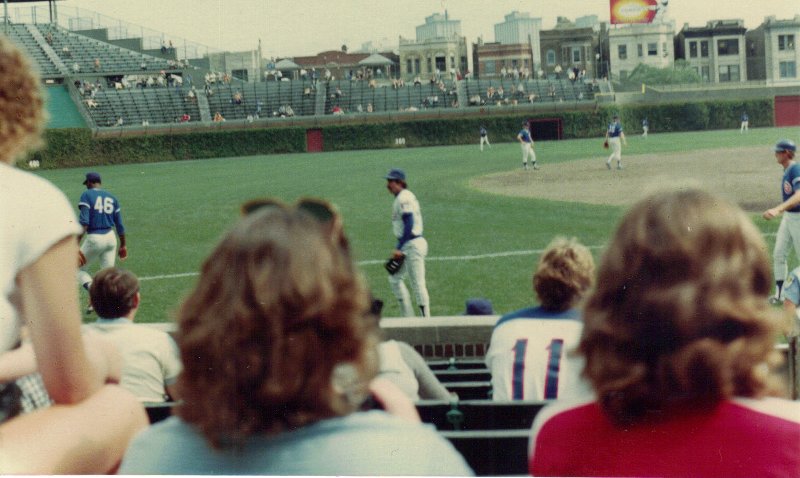
from my personal collection: Smith(46), Bill Buckner, Jody Davis, circa 1981
Jose Cardenal
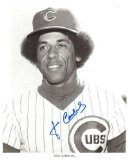
Jose Cardenal was one of the most colorful characters ever to play for the Cubs. With his infectious smile, fun loving personality and huge Afro, Jose brought a sense of fun and speed to the team at a time when both were in short supply and he stayed for 6 years.
Jose Rosario Domec Cardenal was born in Cuba, getting out just as Fidel Castro came into power by signing with the San Francisco, just the latest in a number of Latin American prospects that included Orlando Cepeda, Jose Pagan and the 3 Alou Brothers. It was the glut of Alous in the outfield that stood in the way of Jose. After 2 years, the Giants traded Cardenal to the Los Angeles Angels for another future Cub, Jack Hiatt. Jose only hit .250, but he did steal 34 bases. In 3 years with the Angels, he hit .257 with 71 steals. Then in 1967 was traded to Cleveland for Chuck Hinton where he posted virtually the same numbers. Following a trade to the St.Louis for Vada Pinson, Jose suddenly began to figure it out, hitting a career high .293. However, it was brief as he struggled in 1971 and found himself traded to the Brewers. By the time he was traded to the Cubs in return for Jim Colborn, Earl Stephenson and Brock Davis, he had a career average around .260 and 300 stolen bases. I dont know what happened but coming to the Cubs was exactly what he needed. He would hit .291 and score a career high 96 runs. Somehow a light went in Joses head and he became one of the most popular Cubs of recent years. Just watching him in the outfield before the games, you could tell he was having fun and that crossed over into the games. But one of the most memorable attributes of Joses personality were some of the quirky excuses that kept him out of games. In 1972, Cardenal declared himself unfit to play because crickets in his hotel room had kept him awake all night. On the opening day of the 1974 season, Jose said that he couldn't play because his eyelid was stuck open. Apparently, he'd 'slept funny and couldn't blink'. That's right, it was stuck open, not closed. But it didnt come off like he was gold bricking because he seemed sincere. And for the next 5 years he was one of the Cubs best hitters, hitting over .290 each year. By 1977 his numbers began to decline and by 1978 he would be traded to the Phillies. He would also play for the Mets and the Royals, finally reaching the World Series with Kansas City, even though they lost. Since retiring following the 1980 season, Jose has remained in baseball as a coach and still makes his off-season home in Chicago. So heres to Jose Cardenal, one of the truly unique figures in the history of the Cubs......
Randy Hundley
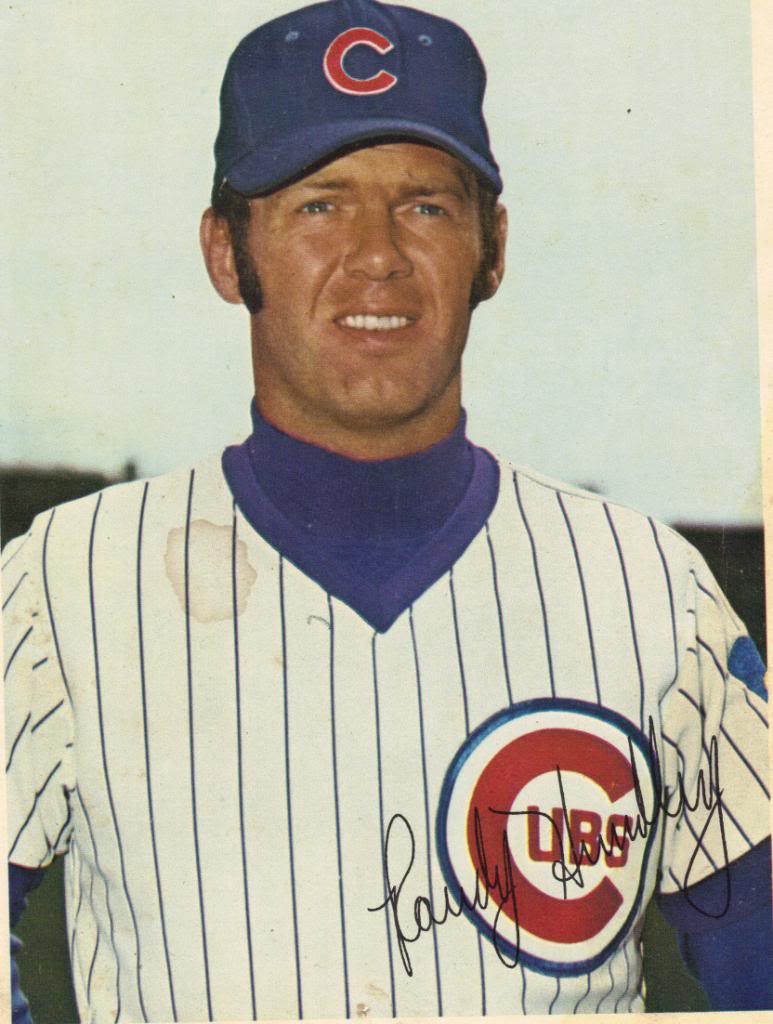
The red-headed catcher on the 69 Cubs nicknamed the Rebel because of his Southern background, Randy Hundley helped define the team that nearly won a pennant until being overtaken by the upstart Mets. For me one of the most indelible(and heartbreaking)images of that season was that of Hundley vehemently arguing a call at home plate on a tag that Randy made on Met Tommie Agee in a key game in September, mostly because I thought he did get the tag, though the umpire called him safe. That I still remember that one play from a game played 42 years ago says a lot about how I feel about that season and Hundley in general. Though there are more famous players from that team(Banks, Williams, Jenkins and Santo are all HOFers, Beckert is my favorite player), I think Hundley in some ways was the heart and soul of that team and when he was taken out 2 years in a row by devastating knee injuries, it took a lot of wind out of the Cubs sails and kept them from winning. In addition, the very first Cubs player autograph that I got in person was of Randy Hundley.
Cecil Randolph Hundley was born in Virginia in 1942 and signed as free agent by the Giants in 1960. He moved up the Giants system gradually, but with catchers like Dick Dietz and Tom Haller ahead of him, it didnt seem like he had a future in Sam Fran. So when John Holland came to Giants with reliever Lindy McDaniel and OF Don Landrum, they jumped at the offer. It was a tremendous trade for Holland getting Hundley and young right handed pitcher Bill Hands while only giving up the minimum. Hundley gave the Cubs their first truly great catcher since Gabby Hartnett retired as a player in the late 30s. While Randy only hit .236 in 1966, he did slug 19 homers and gave the Cubs a great defensive presence behind the plate. It was Hundley who mastered a one handed style of catching that would be emulated by HOFer Johnny Bench and people erroneously credited Bench with popularizing the style. In 1967 Hundley took the next step as he hit .267 with 14 homers, even finished 22nd in MVP balloting and won his first Gold Glove for defensive excellence in helping the Cubs make a big move up the standings. By 1968, he had established a precedence for endurance by catching 160 games, although most of his offensive numbers fell dramatically, except for RBIs which he set a career high with 65. Then came 1969. Once again he had solid offensive numbers, hitting 18 homers, .255, and career high OBP .334, 67 runs scored, his first All Star Game appearance in 151 games. No matter what he did offensively, you cant deny his impact as a catcher. He was highly respected by the pitchers on the Cubs staff. However, questions linger over whether he was overused. 3 years in a row appearing in over 150 games. Ive heard Hundley claim that the summer heat wore out not only him but the whole starting lineup. Im not sure how true that is. If memory serves me right it was actually a fairly mild summer. But looking at how he was used himself you have to wonder if playing in 460 games in 3 seasons finally caught up to him. But you cant deny his passion. Would you keep a guy like him out of the lineup if he was healthy enough? Its hard to think about him without thinking of that picture of him arguing over the Agee call. Then came the injuries. In a game early in 1970, Hundleys knee was torn up and missed a good chunk of the season. On the surface it wouldnt seem like they would miss him that much, especially after they added Joe Pepitone and Milt Pappas, but something was definitely missing. Nothing against Jack Hiatt or JC Martin, but Hundley was heads and tails better than them and had a lot more passion. He only appeared in 73 games, most of them coming after the team was already pretty much out of the race. Then, just when it looked like he would be back, he suffered another serious knee injury that kept him out for almost the whole season. Not suprisingly the team suffered again, but this time Hundley missed the notorious Clubhouse Revolt. He would return in 1972 and 73 but was only a shell of the offensive player he had been and not much better offensively. Then he would be dealt to Minnesota following the 1973 season in return for fellow catcher George Mitterwald. Then after a seaon in Minnesota and one in San Diego he would return to the Cubs in 1976, but only appeared in 15 more games before hanging it up as a player in 1977.
Randy would continue to coach and manage in the Cubs organization through 1981. Following 1981 Hundley would begin organizing a fantasy camp that involved allowing fans to come to an actual major league style camp to practice with actual ex-major leaguers, culminating in a final game between the campers and the ex-players. Hundley managed to get many 1969 Cubs teammates to attend, but one of the most prominent was fellow ex-catcher Gene Oliver. Oliver became kind of famous for being a fantasy camper. Soon, other organizations began to copy Hundleys concept, allowing fans to mingle with their heroes of the past. Even one famous episode of the TV sitcom Seinfeld had Kramer attending a Yankee camp and getting into a fight with Pepitone after accidentally hitting Mickey Mantle.
Hundley continues to run these camps today, in conjunction with the Cubs. Randy is also a familiar face at Wrigley Field, singing the 7th Inning stretch on a number of occasions. Although his career did not end in a pretty way, its hard to forget what he did with the Cubs in his first 4 seasons. 58 homers, 60 RBIs each year and Gold Glove and All Star appearance, the Rebel will always be remembered. And, Im sure he would agree with me that Agee was still out..........!
George Altman
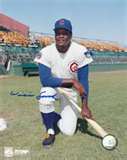
George Altman was a Cubs player in the late 50s and early 60s, being that rare commodity of a nonpitcher to come out of the Cubs farm system at a time when they brought up mostly pitchers. Altman was also a unique baseball player in that he is the only one in the history of baseball that played in the Negro Leagues, the Major Leagues and the Japan Leagues as well as college leagues. Altman came from the same area that produced Hank Aaron, Ernie Banks, Billy Williams and Willie Mays. He signed with the Negro Leagues at a times when the need for them was no longer there and they were dying. He only spent 3 months there when he signed with the Cubs. After a couple of years in the minors and a stint in the Army, Altman joined the Cubs in 1959. He struggled a bit at first, but by 1961 he was one of the top sluggers in the NL, even making the All Star team. Following a huge year in 1962 he would be dealt away in what turned out to actually be a pretty good trade for the Cubs, receiving Larry Jackson and Lindy McDaniel in return. Meanwhile, Altman would struggle in St.Louis, becoming only a shadow of what he had been in Chicago. A year later he would be sent to the Mets, a comedown certainly for a one time All Star. But in 1965 the Cubs would reacquire him. While not quite the player he had been with them before, he was still a useful bench player. But after Leo Durocher took over as manager, Altman had problems getting along with the sometimes abrasive skipper. So much so he gladly accepted a release by the team in 1967. From there he moved to Japan where he became a popular player and hit over 200 home runs there. He finally retired in 1975. In all he had 83 homers in 7 years with the Cubs hitting .276. Very solid career with the team. Since retirement he worked at the Chicago Board of Trade and then started his own business which he still runs today. He remains an avid follower of his one time team and I would hope that maybe someday they will invite him back to Wrigley Field because he was very much a part of the history of the Cubs.
Bob Rush
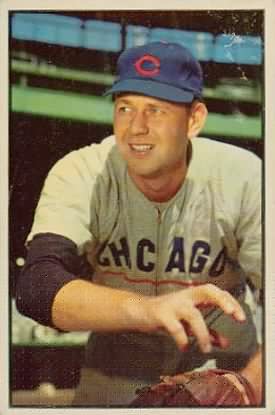
Bob Rush was a starting pitcher for the post war Cubs at a time when they had some pretty bad teams, first appearing in 1948 and going on to win 127 games for the Cubs in 10 years, reaching double figures 8 times, including 17 in 1952. Considering how bad some of the Cub teams were Rush fared pretty well. He earned 2 All Star selections in 1950 and 1952. After a solid career with the Cubs, he would be dealt to the Braves following the 1957 season and helped get Milwaukee to the World Series the next season. He would win 10 games as a spot starter and after one more season with the Braves he finished his career with the White Sox.
"Handy" Andy Pafko
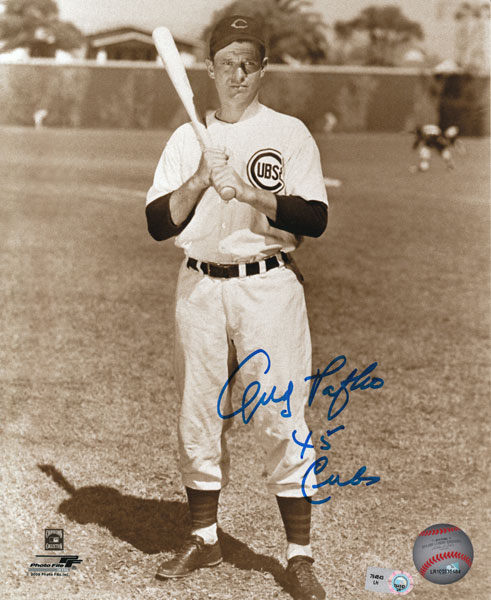
Andy Pafko is one of the true icons of Cubs history and one of the most beloved players as well, he was my dads favorite player. Coming out of Wisconsin, he was signed by the Cubs out of college and made his first appearance with the Cubs in 1943 and had an impressive start, hitting .379 in 13 games. By 1945 he established himself as a star hitting .298, driving in 110 runs and slugging his way to .455 slugging pct. He would go on to hit .300 3 times between 1947-1950. 1950 would be the high water mark of his career, hitting .304, 36 homers, scoring 95 runs and .397 OBP. After struggling to start the 1951 season, on June 15, a date that will live in infamy in the minds of most Cub fans, he would be dealt to Brooklyn in what for my money, Brock for Broglio notwithstanding, is the worst trade in the history of the Cubs, moving their best all around player while getting nothing of real value in return. I honestly believe that this trade set them back several years. Pafko would get to play in the one of the most famous baseball games of all time, the playoff game between the Giants and Dodgers that was capped by Bobby Thomsons "shot heard around the world. After one more solid year in Brooklyn he would be dealt closer to home with the Milwaukee Braves where he had 2 more good years before his numbers and his playing time began to decline. He still managed to be a key player on the Braves championship team in 1957 but after 2 more seasons Pafko called it a career and following a stint as a coach then a minor league manager, he retired to where he had his greatest success, in Chicago.
Even after 60 years since his last game as a Cub, the name Andy Pafko continues to resonate for fans who werent even born since he retired. His hard working, blue collar attitude set the standard for the kind of play Cub fans still expect from their heroes. He has been a familiar face at card shows over the years and I was lucky enough to see him in person and get his autograph some years ago. He still roots for the Cubs and occasionally appears at Wrigley Field. Now over 90 years old, "Handy Andy" is still a Cub always and forever.
Stan Hack
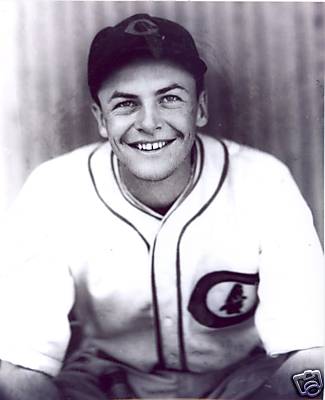
Smiling Stan Hack was a popular player with the Cubs in the 30s and 40s, but his career was defined by a triple he hit in the 1935 World Series which left him stranded at 3rd Base while Detroit went on to win the game and the Series. That moment helped to personify the frustration of the Cubs, even in an era where they seemed to be in the World Series every 3 years. Hack played on 4 of those teams, including being a key member of 3 of them. He was one of the best 3rd Basemen of his time, known for his consistency. And he was so popular with his smile and upbeat attitude, the Cubs once came up with the idea of giving away Smiling Stan mirrors, but the promotion backfired when fans used the mirrors to interfere with the other teams hitters.
Hack was signed by the Cubs in 1931, among the last players signed by William Veeck, Sr. He came up to the Cubs in 1932, mostly backing up Woody English and even saw some action in the World Series against the Yankees. After a stint in the minors in 1933, he settled in at 3rd Base the next year hitting .289. Hack would play a key role in the Cubs winning the pennant in 1935, hitting .311 with 9 triples, 64 RBIs and an almost unheard OBP of .471! Stan was never a home run hitter, but his value as a lead-off man has rarely been equaled by a Cub player since. He reached double figures in steals 9 times in his career, including 12 in 1945. But perhaps his most famous moment came in the final game of the 1935 World Series. With the Cubs tied in the game Hack hit a triple and it looked like they had a rally going, but the Cubs could not get Stan across and left him stranded, ending the game and Series. The image of Hack standing at 3rd Base would help define his career and the Cubs inability to close the deal in winning a championship. Hack would also play a big role in the 1938 pennant, hitting .320, with a career high 195 hits, 11 triples and .475 OBP! And while he had an incredible Series, the rest of the team was overpowered by the Yankees. Hack continued to put up consistent numbers every year and one thing that really knocks me out are the OBP numbers. Those are some of the most impressive on base numbers Ive ever seen. The guy just simply had a knack for getting on base. And for many years he would team with Billy Herman at the top of the Cubs lineup and I can guess that Hack helped make Herman a better player as much as Hermans presence must have made Stan a better player. After the Cubs stupidly traded away Herman you can see a distinct drop off in Hacks numbers. Of course part of that could be due to the contentious relationship between Hack and Manager Jimmie Wilson. It became so bad that Hack retired in 1944. When Charlie Grimm was brought back to manage, Hack returned and had one of the best years of his career in 1945, hitting a career high .323, .491 OBP(!!!!), scoring 110 runs and getting 193 hits. Once again Hacks performance wasnt enough to get the Cubs a championship and following 1945, they began to phase Stan out and he would retire for good after 1947. He would leave behind an impressively consistent career. Only one season with an average under .270, 7 times scoring 100 or more runs, 14 seasons with an OBP over.400!
Following his playing days he became a minor league manager where he actually had some success and in 1954 he would replace long time teammate Phil Cavaretta as the big league manager, though he was just overmatched. He simply did not have the talent outside of Ernie Banks, Hank Sauer, Randy Jackson and a couple of decent pitchers. He would be gone after the 1957 season and for the first time in his baseball career was not associated with the Cubs, moving on to join the Cardinals whom he would manage for 10 games in 1958. After managing in the minors until 1966 with one final stint with the Cubs he retired to his home in Dixon running a business with his wife. He passed away in 1979.
Is Stan Hack a Hall of Famer? Well, he has some interesting numbers. The BA is very solid, the OBP is absolutely impressive, but he wasnt a power hitter at a time when most of the best 3rd Basemen were. But from what I can gather, he was a pretty good defensive 3rd Baseman. Whats interesting is if you throw out Ryne Sandbergs power numbers, Hack compares favorably to Ryno, except that Sandberg was a 2nd Baseman. The problem is, if you compare Hack to most 3rd Basemen, his numbers pale because most of the 3rd Basemen in the HOF were great power hitters. But if throw out the power numbers, well, you can see where this is going. This isnt really the place to make a Hall of Fame argument, but maybe another time. But I would be interested in other peoples opinions. Feel free to drop me a line if you think hes a Hall of Famer.
Sheriff Blake
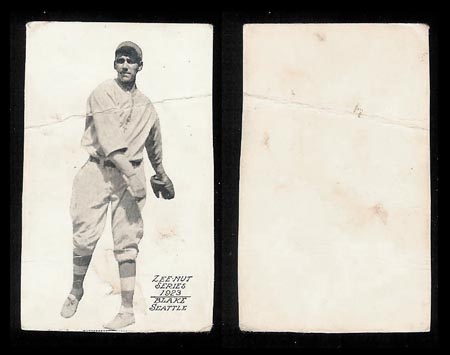
Sheriff Blake was a pitcher with the Cubs in the latter half of the 20s, playing a key role on the pennant winning team in 1929. Blake first came up with Pittsburgh in 1920 then wound up with the Cubs in 1924, struggling for 2 years before beginning to find himself in 1926, going 11-12 with a 3.60 ERA and throwing 4 shut outs. After winning 13 games in 1927, Blake came into his own in 1928, going 17-11 with 2.49 ERA and leading the league in shut outs with 4, establishing himself as one of the leaders of the Cubs pitching staff. Then the next year the Cubs would win the pennant, though Blakes numbers were down, he still won 14 games. Then in the World Series Blake struggled, playing a key role in the famous game which saw the Philadelphia A's come from 8 runs down to win. Unfortunately the Cubs lost that Series. And although Blake won 10 games in 1930 his numbers went into a decline and he would be released in 1931. Except for a brief attempt at a comeback in 1937, Blakes major league playing days came to an end. He played in the minors until 1941, taking a shot at managing that season, but he would retire from baseball following that season. There is little info on his post playing days, but it can be assumed that he enjoyed his post playing career. Blake won 81 games with the Cubs in 8 seasons, which is still a respectable average of 10 wins a year. A decent pitcher who had some success.
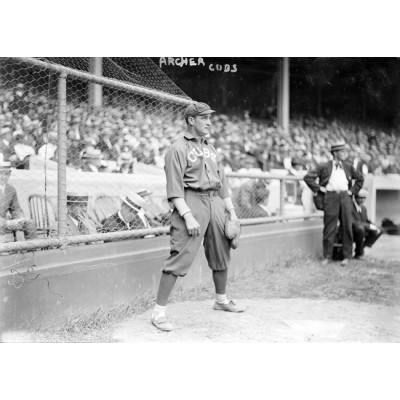
Ed Reulbach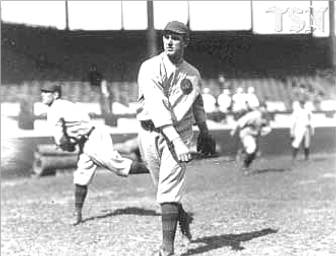
Ed Reulbach is kind of an obscure figure today, mostly because he spent his Cubs career overshadowed by 3 Finger Brown, but Reulbach definitely deserves better. His most famous achievement was pitching shut outs in both ends of a double header(the last major leaguer to do that) and winning 138 games with the Cubs. He also had an ERA UNDER 2.00 5 TIMES, which is impressive even in a pitching dominant era that he pitched in. He was also known for being an activist for players rights at a time when most players just accepted the staus quo. Not suprisingly, this stance would cost him late in his career. Reulbach joined the Cubs in 1905 straight out of college(indeed, he was a rarity in that he not only went to college, but he was something of an intellectual) and immediately established himself as one of the key players on the Golden Age era Cubs, winning 19, 17 and finally peaking at 24 wins during the run of pennants from 1906-08. Personal issues kept his numbers down in 1910, but he won 16 in 1911. After a down year 1912 and struggling in 1913, Reulbach was dealt to Brooklyn where he got involved in an early attempt to unionize baseball called the Players Fraternity. He also advised teammate Jake Daubert not to take a contract offered to him and when Brooklyn owner Charlie Ebbets got wind of Reulbachs actions, soon it would get big Ed released, from there he went to the Federal League, where he had his best season in 5 years, winning 20 for only the 2nd time in his career. Following the demise of the Federal League Reulbach would be allowed to return to the NL with the Braves where he finished his career out of the bullpen. Following his playing career he would spend a lot of money trying to take care of his sickly son, though his son would die young anyway. He was considered one of the smartest people in baseball in his time and although his peak years were rather small, some of his achievements were remarkable. Along with the 2 shut outs in one day, he also had a 44 consecutive scoreless innings streak in 1908, Became the only pitcher in the 20th century to have 2 winning streaks of 14 games, one of 17 in 1906-07 and another in 1909. He died at the age of 78 in 1961. Reulbach is still prominent on Cubs career leader lists, 3rd alltime in shut outs with 31 and 4th all time in ERA with 2.24. He has been compared to Sandy Koufax, though based on the short length of his peak years, Dizzy Dean might be a more comparable comparision, especially when you talk about the Hall of Fame. If Dean is in, why not Reulbach? Just food for thought, but take a look at his numbers and decide for yourself.
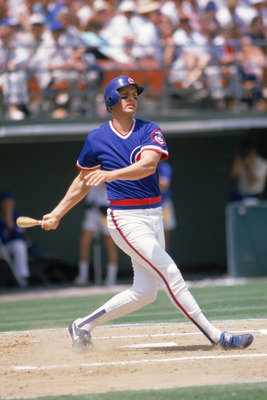
Rick Sutcliffe
On June 23, 1984 Ryne Sandberg became a household name by hitting 2 home runs off of Bruce Sutter and began his road to the MVP award. On June 24, 1984, Rick Sutcliffe, newly acquired from Cleveland with a 4-5 record, appeared at Wrigley Field for the first time as a Cub and pitched a shut out over the Cardinals, pitching no-hit ball for 7 innings. While the "Sandberg game" has taken on mythic proportions, the Sutcliffe game has been overshadowed, yet true Cub fans appreciate Sutcliffes performance, as well as the fact that the tall red headed pitcher would end up winning a combined 20 games with 2 teams, a feat that hadnt been accomplished since Hank Borowy did it with the Yankees and Cubs in 1945. Sutcliffe would go on to have a solid career as a Cub, in spite of arm troubles that plagued him throughout most of his time with the Cubs.
Rick Sutcliffe was originally signed by the Dodgers and became one of LAs many Rookie of the Year winners. Yet he never really fulfilled his potential with the Dodgers. A trade to the Indians seemed to recharge him and he had 2 solid years there, but struggles by June led to the trade to the Cubs. With the Cubs Sutcliffe really came into his own. He was impressive in the playoffs, even hitting a homer in the first game against San Diego, though in Game 7 he ran out of gas at the worst possible time as the Cubs lost. But though he had injury issues in 1985 and 86, he returned to win 18 games in 1987, then 13 and 16. Injuries began to take their toll by 1990 and 91. He would leave for Baltimore then St.Louis where he would finish his career. When healthy, there were few pitchers better than Rick Sutcliffe and his 6ft 7 frame, winning 88 games as a Cub. Sutcliffe was always very personable and generous. He was known for working for good causes. Today he works as an analyst for ESPN. He will always be remembered here for his clinching game in 1984 and for being one of the great pitchers in Cub history.
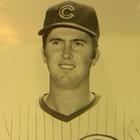
Rick Reuschel
Big Daddy, as Rick Reuschel was known was an ace pitcher with the Cubs at a time when they did not have a great pitching staff and he had to carry them, almost alone.Big Daddy not only suited his size but it also seemed to fit his mature pitching ability and his leadership. But, amazingly, after an injury that seemed to put his career in jeopardy, he returned for a second act that was more exciting than the first. However, that second act would not be with the Cubs.
Rick Reuschel was born in Danville, Illinois and become, along with his brother Paul, who would also play for the Cubs, a baseball pitcher. He was drafted by the Cubs in 1970 and because of the lack of talent in the Cubs farm system he moved up quickly and found himself with the Cubs by June 1972, where almost from the day he first set foot on a major league field, he seemed like a mature veteran. He would win 10 games for a team that was in flux with the firing of manager Leo Durocher. From the start he impressed me. I always felt he was going to be a great pitcher. And for someone with his bulky body he could be very adept at running the bases. I remember one game in particular where his hustle led to a run. I think it was a wild game they won 16-15. And he could also hit and field his position as well, for his size he was an excellent athlete. The next year he won 14 games for a team that started out great, but ended up fading. Then the next year, with Jenkins and Pappas gone, he was the teams ace, but for the first time as a Cub, seemed to be overwhelmed as he won only 13 games and had an ERA over 4. In 1975, he continued to struggle with an 11-17 record and ERA just under 4, but came back in 1976 to win 14 and an ERA around 3 and a half. But 1977 was the year that Reuschel really came of age, winning 20 games for the first time and contending for the Cy Young until September. His 4 shutouts and 2.79 ERA put him among the leagues best. The hope that Big Daddy could continue to improve went out the window as Reuschels numbers fell to just about mediocre levels. He did win 18 games in 1979, but the ERA was high. By 1980, Rick was being plagued more and more by injury issues, though he still managed to pitch 257 innings. But the other numbers continued to be down from what you might expect from your ace. Compound that with the fact that the team as a whole was awful and you have problems.
In 1981, Rick got off to another mediocre start and with Mike Krukow coming on, new GM Herman Franks decided to trade Reuschel as his first move, sending Big Daddy to the Yankees for Doug Bird and Mike Griffin on June 12, 1981. The trade would end up being a bust for the Yankees as Reuschel ended up having surgery that would keep him out for the entire 1982 season. The Yankees released Reuschel in 1983, just under 2 years after having acquired him. The Cubs signed Reuschel as a free agent and he pitchd in 4 games in 1983 and would return in 1984. 1984 was a triumphant year in general, but sadly, Big Daddy was not a factor as he made only spotty appearences and ended up with an ERA over 5. It was sad way for someone who had been how much a part of the Cubs most of his career, to end his Cubs career. Manager Jim Frey had a chance to bring him back in 1985 and in hindsight he should have, but appearantly Frey was too short sighted to think any of his starting pitchers would go down, much less the entire rotation. Okay, one pitcher wouldnt have kept the team from collapsing, but maybe Reuschels presence would have slowed it down a little. Following his release from the Cubs, Big Daddy would end up on the Pirates where his career had a revival, then a trade to the Giants made him relevent again and he would remain a force in San Francisco until he retired in 1992. He would win 88 games after leaving the Cubs. While his time as a Cub did not end the way Cubs fans would have liked, he is still well remembered for the great years he had here. Big Daddy will live forever as a Cub!
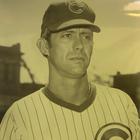
Jim Hickman
Jim Hickman was basically a journeyman player with the Cubs, but thanks to one incredible season will forever be linked with one of the most famous moments in All Star game history. The lanky and soft spoken Hickman travelled quite a ways to get to his place in baseball history. He was orignally signed by the Cardinals in 1956, but because of the glut of talented outfielders there, he got lost in the shuffle and spend 5 years in their minor league. He would be rescued(?) by the Mets(!) when they drafted him in the expansion draft in 1961. For what its worth though it was his first chance to play in the majors and he was not totally terrible as he did hit with some power, including a 3 homer game in 1965. But despite the homers, he struggled to get his average over .230 and the Mets finally traded him to the Dodgers in 1967,(if the Mets of that era didnt want you, that was bad!) where he actually hit bottom hitting an awful .167. The Dodgers would deal him to the Cubs on April 23, 1968 along with reliever Phil Regan, even though Regan was still in his prime, for Ted Savage and Jim Ellis. It is a curious trade, even with the inclusion of Hickman. Savage would never be more than a back up outfielder and Ellis seemed to be a throw in. But as Regan was having a productive year for the Cubs, Hickman was back in the minors with the Cubs hitting only .223 and 5 homers. That may have been the low point of Hickmans career, but when Jim joined the cubs in 1969, he began to flash the potential he had shown early in his career in New York and as the season developed, Hickman would become a valuble member of the Cubs. With Banks in the twilight of his career, Spangler nearing the end and Don Young becoming virtually useless, Jimmy become a versatile alternative. He would hit a career high 21 homers playing all 3 outfield spots. Although he hit only .237, he showed enough promise that he would be guaranteed a regular job in 1970. And he took full advantage of the opportunity by hitting like he never had before, even making the All Star team. And what a memorable All Star game apparance it would be as he came to bat in a tie game with Pete Rose on base. Hickman then hit a single that sent Rose towards home, which led to the most famous collision in baseball history between Rose and the unfortunate catcher Ray Fosse. It was the collision heard around the world, making Pete Rose forever famous for his bold baserunning style and Hickman forever linked to Rose thanks to his single. That was the highlight of the career year to end all career years. Hickman would end up with 32 homer, 115 RBIs, .315 average, 102 runs scored and .419 OBP. While he would never reach any of those numbers again, he would never hit below .240 for rest of his career and continued to hit homers with 19 and 17. But by 1973 the homers stopped coming and he would be traded to the place he started, St. Louis where he finished his career. Gentleman Jim, as he was known for his quiet demeanor retired from baseball. He now lives quietly in retirement in his Tennesee home.
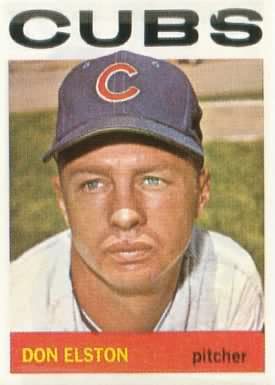
Don Elston
Don Elston was a pitcher with the Cubs in the late 50s and the early 60s. He would become one of the first Cubs to be used exclusively as a closer. Elston first signed with the Cubs in 1947 and came up in 1953, mostly starting. He would be traded to the Dodgers in 1955 in the same deal that sent Randy Jackson to Brooklyn. After an unimpressive year and a half, he was sent back to the Cubs in a trade that would turn out to be one of John Hollands first really good deals as GM. After being used as a starter the remainder of the season, the next season manager Bob Scheffing was using Elston exclusively as a closer. While the Cubs also used Bill Henry to close occasionally, it was Elston who usually finished out games and in 1959 he saved 13 games, appeared in 65 games and earned a spot in both All Star games played that year. Elston would continue to be a mainstay in the Cubs bullpen, though with the lousy Cub teams of the era, save opportunities were rare, though he did reach double figures in saves 3 times and led the league in games pitched twice. By 1964, Elston reached the end of line and after one year in the minors and another year trying his skills at managing, he would retire to a 30 year job with a machinery company. He would pass away on January 2, 1995 in Evanston, Illinois.
Hope you enjoyed this look at another great Cub of the past. Check in next week for another Cub star of the past!
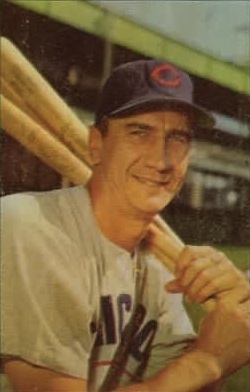
Hank Sauer
He was known as the "Mayor of Wrigley Field". And long before Dick Selma was conducting the Bleacher Bums following him, long before right field bleacher fans were Salaaming Andre Dawson and Sammy Sosa,even before Ernie Banks was Mr. Cub, there was Hank Sauer......He was the big slugging star at a time when there wasnt much else to cheer about the Cubs. For 6 years he thrilled Cubs fans. Yet it wasnt easy for him. By the time he got to the Cubs he was already over 30 years old.
Henry John Sauer was born in Pittsburgh in 1917 and was originally signed by the Yankees in 1937 but was drafted by Cincinnati in 1939. He had a couple of cups of coffee with the Reds before enlisting in the Coast Guard in World War II. Following the war, he joined the Reds where he showed flashes of power, hitting 35 HRs in 1948, but was never really given a chance until he was traded to the Cubs in what was one of Wid Mathews best trades on June 15, 1949. He finished the year with 31 HRs and proceeded to continue to improve his numbers. He would top 30 HRs each of the next 3 seasons, including a league leading 37 in 1952, along with 121 RBIs, which helped earn him the MVP award, making him the first major leaguer to win an MVP award with a second division team, even though at 77-77 and in 5th place it was one of the better Cubs teams of the 50s. A broken finger derailed his season in 1953, but he came back bigger than ever in 1954 with a career high 41 HRs. His.288 average was also the 2nd highest of his Cub career. Sauers easy going personality to go along with his ability to hit the long ball added to his popluarity. Although for me personally Sauer was a little before my time, still there must have been something about him to cause fans to throw tins of his favorite smokeless tobacco on the field whenever he hit a homer. What I find interesting about his numbers is although he hit 30 homers every year, he did not strike out a lot, which is very unusual, even for a 1950s slugger. He only cracked the 90 SO range once in his career, so he was clearly no Dave Kingman. His numbers really declined in 1955, with only 12 homers and hitting .211. Following a salary dispute he would be dealt to St. Louis.From there he would be picked up by the New York Giants were he had a comeback of sorts with 26 homers, but soon ended his playing career.
Sauer would remain in the Giants organization as a coach and a scout until 1993. He would also settle in Wisconsin where he would take up mountain climbing and embarked on a project to recreate Mount Rushmore in a local mountain, however that would not pan out. On August 24, 2001 Sauer collapsed while on a golf course in California and would pass away. His son would say that "at least he died doing something he loved". But Sauer will be remembered well in Chicago for the thrills he provided Cubs fans and that was reciprocated by Sauer who still thought highly of Chicago years later, saying that "returning to Chicago was like coming home". For someone who wasnt around then, I wish I had been and Im glad to offer my respects to the "Mayor" of Wrigley Field........Until next week.......
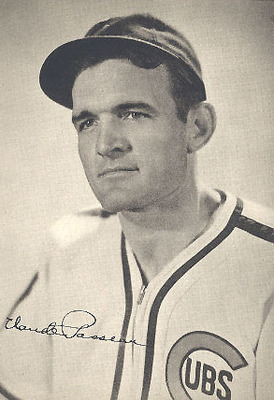
Claude Passeau
Claude Passeau was a pitcher with the Cubs in the late 30s and early 40s. He is probaly best known for giving up a home run to Ted Williams in the 1941 All Star Game, but his finest moment came in the 1945 World Series when he pitched a one hitter against the Tigers in Game 3. He would win 124 games in 9 years with a 2.96 ERA winning 20 games in 1941 and 17 in the pennant winning year of 1945. Injury problems forced a premature end to his playing career. After a brief stint as a coach, Passeau moved to Lucedale, Missouri, where he owned a farm equipment company. He even served as sheriff of George County for 2 consecutive terms. In spite of an injury that ended his plaing career, he lived a long and interesting life, staying married to the same woman for 64 years and making it to the age of 94 before passing away in 2003. He will go down as one of the greatest pitchers in the history ofthe Cubs.
I hope you have enjoyed this look at another great Cub of the past. Tune in again next week to see who is next.
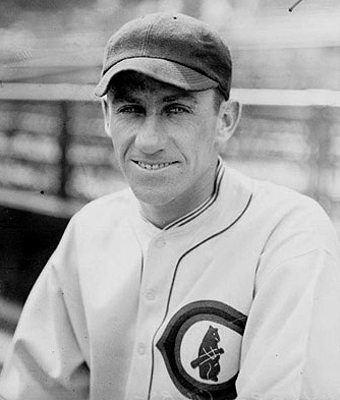
Hazen "Kiki" Cuyler
Hazen "Kiki"(pronounced Cuy-Cuy) Cuyler was a Hall of Fame outfielder who played a key role on 2 Cubs pennant winners. Cuyler first came up with Pittsburgh in 1924 and helped the Pirates win 2 pennants. The Cubs acquired Cuyler following 1927 in one of William Veecks best trades. Cuyler would be a real spark for the team, bringing speed, great hitting and outstanding on base percentage. 1930 would be his best season, scoring an amazing 155 runs and also driving in 134, truly one of the great seasons in the history of the Cubs, though it was overshadowed by Hack Wilsons 56 homers and 191 RBIs. Cuyler would continue to be a productive player through 1934, however by 1935 injuries had taken their toll and he would be released in July. Although he would make a comeback with Cincy in 1936, he would be out of the major leagues by 1938. Following his playing career, he would be a coach with several teams, including the Cubs. Cuyler was a coach with the Red Sox when he suddenly pass away in 1950 at the age of 50. Cuyler was called "Cuy" by his school teammates. It was while winning the MVP title of the Southern Association with Nashville in 1923 that he acquired the euphonious Kiki nickname. Fans heard the players shout for him to take the ball when he rushed in a short fly. The shortstop would yell, "Cuy," and the second baseman would echo the call. In the pressbox the writers turned this into "Kiki." Older fans wince to hear him called "Keekee."
This hard-nosed player was also known for being a gentleman. He was also known for not drinking or smoking. Very much a first class baseball player who perhaps does not get the recognition he deserves. Hope you enjoyed this look at another of the great Cubs of all time.
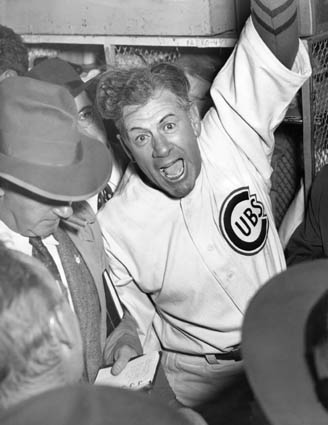
Charlie Grimm
"Jolly Cholly" Charlie Grimm is one of the true icons in the history of the Cubs, as well as one of the real characters. As a player he was an outstanding defensive 1st Baseman and steady hitter, as well as respected leader. As a manager he won 3 pennants, including the last one the team has won to date. Only Frank Chance won more pennants as a Cub. Grimm first came to the Cubs in a trade with Pittsburgh in 1924. He joined a Cubs team in transition, but by 1929 they won a pennant for Joe McCarthy and Grimm played a prominent role. However McCarthy would be gone the next year, replaced by Rogers Hornsby who would turn out to be a bad fit as manager. In 1932, Hornsby would be fired as manager and William Veeck asked Grimm to replace him. The team which had been struggling under Hornsby rebounded under the more amiable and liked Grimm and the Cubs won the pennant, only to lose to the Yankees in a controversial Series that featured Babe Ruths "called" shot. The Cubs remained in contention, but wouldnt win again until 1935 when the team went on a record 21 winning streak. The Cubs would lose a hard fought Series to the Tigers, then, while remaining competitive would not return to the World Series in 36 or 37 and when the team floundered in 1938, Grimm found himself replaced by catcher Gabby Hartnett, who went on the the Series, thanks to the "Homer in the Gloamin". Grimm would remain in the Cubs organization on and off, first as announcer, then as a coach and later a VP. Grimm was known as a lighthearted,colorful guy who liked playing the banjo and telling stories. In 1941 he took a job managing for the minor league team in Milwaukee that was owned by William Veecks colorful son, Bill. After 4 years in Milwaukee, Grimm returned to manage the Cubs in 1945 and with most of the league shorn most of their stars in that war torn year and career years by many of the Cubs, the team won the pennant, only to lose the Series because of the biggest mistake of Grimms managerial career, when he started star pitcher Hank Borowy on 2 days rest, only to see him get predictably rocked. With the war over the NL returned to where it was and the Cubs began their descent into their 20 year abyss. Grimm made it to the 1949 season before he was replaced. 3 years later he resurfaced in Boston as the manager of the Braves final season there before moving to Grimms old stomping grounds in Milwaukee. There Grimm would shepherd the ballclub that would someday win 2 pennants with players like Warren Spahn, Eddie Mathews and a young converted shortstop named Henry Aaron.. It started the first season in Milwaukee when they won 92 games, but somehow under Grimm they couldnt seem to get over the hump and Charlie would be replaced by Fred Haney in 1956. Grimm then returned to the Cubs as a Vice President, but in 1960 Phil Wrigley brought Grimm in to manage his team, declaring that "everytime we bring him in, he wins a pennant for us!" Except this time he didnt have Gabby Hartnett, Billy Herman, Stan Hack, Phil Cavaretta, Hank Borowy, Claude Passeau or even Lonny Frey. He had raw youngsters like Billy Williams, Ron Santo, George Altman, a bunch of sore armed pitchers and past their primes vets like Alvin Dark. Not suprisingly, Grimm struggled and realized that he didnt have it anymore and traded places with radio announcer(and ex-manager in his own right Lou Boudreau.
Grimm remained an honorary VP for the rest of his life and passed away in 1983, having his ashes spread over Wrigley Field, as per his wishes. Grimm was a Cub to the end, although there are questions as to his years as VP. Some people felt he shouldve been more involved in the running of the Cubs and its reasonable to think Wrigley might have listened to him if he had tried to get the owner to put more money into the farm system. Perhaps Grimm felt he had put in his time or maybe he was aware of the trouble others had trying to get Wrigley to do something and figured it wasnt worth it. And some have suggested that Grimm was a racist. Well, I dont know about that. Grimm was a man from an earlier time, when blacks in the majors just wasnt talked about. All I know is the contribution Grimm made to the history of the Cubs, which cant be underestimated. He was a big part of it. He was one of the truly great ones.
James "Hippo" Vaughn
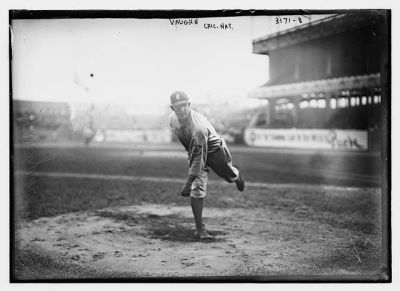
Hippo Vaughn will probaly be forever known as the pitcher who lost the only double no-hitter in the history of baseball, but he was actually more than that. He was a 5 time 20 game winner who was a key member of the 1918 team and you could make a good case that he is one of the greatest Left Handed Pitchers in Cubs history. He originally came up with the New York Highlanders(not yet Yankees) and in fact is still the youngest pitcher in the history of that proud franchise to start on Opening Day. After a stint in Washington, Vaughn wound up in a Cubs uniform in 1913 where he posted a solid 1.45 ERA and a 5-1 record. Starting the next year, Vaughn became the Cubs big game pitcher, reeling off 5 20 victory seasons between 1914 and 1920. On May 7, 1917, Vaughn reached the apex of his career as he matched Fred Toney, hitless inning by hitless inning until the 10th when he ended up giving up a run and losing. It is a game that is still talked about today. Vaughn led a solid pitching staff to the pennant in 1918, though he nor his teammates could hold off a Boston team led by Babe Ruth, who beat Vaughn in game 1. Although Vaughn had 2 more decent years, the team went into decline and kept his record. But 1921 saw his numbers drop drastically and soon he got into a situation that saw him suspended at which time he just up and left the Cubs. He would resurface in the minors and semi pro where he would play until 1937. Vaughn would finish up with 151 wins in a Cubs uniform, the most by a left hander in Cubs history. Following his baseball career, he worked as an assembler for refrigeration company. he died in May 29, 1966.
While not a Hall of Famer, Vaughn is pitcher who probaly deserves more recognition. Which I hope as Cub of the Week, people will realize what a great pitcher he was at his best.
If you are interested in knowing more about Hippo Vaughn, check out this link to a biography from the folks at SABR which has some interesting tidbits:
http://bioproj.sabr.org/bioproj.cfm?a=v&v=l&bid=921&pid=14570
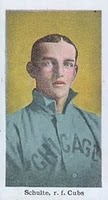
Frank Schulte
Frank "Wildfire"Schulte may be one of the most underrated players in Cubs history. He was the first player to win an MVP award, he was the first player in MLB history to hit 20 homers, 20 triples and 20 doubles in one season. He had very solid numbers in his career.
When he was young and had become a promising baseball star, his father tried to bribe him to keep him from devoting his life to the sport. After a couple of years in the minors, Frank Selee signed him for the team that was now known as the Cubs in 1904. H would soon become a fixture on the team with Frank Chance, Mordecai Brown, Johnny Evers, Johnny Kling and Joe Tinker, but Schulte would spend most of his career overshadowed by them. Schultes nickname came from his horse, whom he had named after a play that featured famous actress Lillian Russell. Schulte also reportedly had a thing for hairpins.
One of Schultes main strengths was his speed. He stole 233 over his career, including 22 steals of home. Not generally a power hitter, he did lead the NL in homers twice, hitting 10 and 21 in consecutive years. He never really had spectacular numbers, except for 1911, when he topped career highs in every major category except batting average. But he was always a dependable performer. Interestingly enough he didnt really come into his own until the tail end of the Cubs golden age and would be the last remaining member of the 1906-10 era to leave. He would b traded in 1916 where he went into a rapid decline. He would be out of the majors by 1918, but hung around in the minors for several years after.
He would eventually settle in Oakland where he would live until his passing in 1949.
Schulte was very underrated and while no HOFer, he was an important part of the Golden Age Cubs success.
I want to thank SABR for some of the information on Schultes life and career. If you are interested in more detailed info on Schulte, check out this biography on him:http://bioproj.sabr.org/bioproj.cfm?a=v&v=l&pid=12680&bid=909
Hope you enjoyed this look at another great Cub of the past, see you next week!
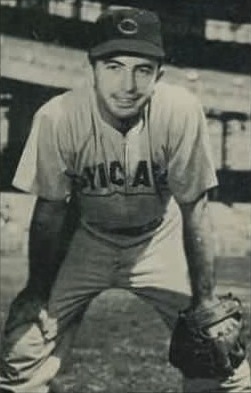
Randy Jackson
"Handsome" Ransom Jackson was a popular player with the Cubs in the early to mid-50s, one of the few reasons to get excited about what was mostly terrible teams in the worst decade in the teams history. Jackson was a good college football player who was a teammate of future NFL superstar Bobby Layne, but was convinced by the Cubs to sign with them. By 1953, Jackson was regularly hitting around .270 and 15 homers a year and made the All Star team 3 times. But just as it looked like he was hitting his stride, he was dealt to the Dodgers in another of Wid Matthews questionable trades, though this one did yield them Moose Moryn who became a Cub favorite through the end of the decade. However, just as it appeared that Jackson was set for a long stay with the Dodgers, he suffered a serious injury that derailed his career. He would return to the Cubs in 1959 where he finished his career. While it wasnt a long career, he did have his moments.
If you are interested in knowing more about Randy Jackson, check out Baseball Todds Dugout for an excellent interview:http://www.baseballtoddsdugout.com/randyjackson.html
Clay Bryant
Clay Bryant pitched for the Cubs in the mid-30s. He was acquired from the Cleveland Indians in 1934 and made his debut with the Cubs in April 1935. After a handful of games that season he would spend the next 2 seasons as a reliever then in 1938 he joined the starting rotation and put together a great year, winning 19 games, pitching 3 shut outs and leading the league in strikeouts with 135 and even hit 3 homers with 15 RBIs. Thanks in part to his performance the Cubs made it to the World Series. In Bryants one appearance in Game 4 of the Series, Bryant would lose to the Yankees, giving up 4 runs in 5.1 Innings. Unfortunately, the Cubs would lose the Series to the Bronx Bombers .
Sadly, Bryants career was derailed soon after by arm injuries. The final 2 seasons of his career, he appeared in only 12 games and won only 2 of them with an ERA around 5. Interestingly enough, Bryants career came crashing around the same time as his much more famous teammate, Dizzy Dean. Unlike Dean, who hung around several seasons past the point that he shouldve quit, Bryant called it quits in 1941 and moved into managing and coaching. For most younger baseball fans like myself he is best known as a coach. He had some success working with a group of young pitchers in the Cleveland Indians organization, a group that included Luis Tiant and Sam McDowell. He coached in the major leagues until 1974. He passed away in 1999 at the age of 87.
Bryants grandson Charles would be a football player and his great grandson, Cameron attended Lake Erie College and played football there. So the athletic bloodlines go on long after Clay Bryant is gone.
Just another interesting career of a Cubs player who may be somewhat under the radar. Hope you enjoyed this profile. Feel free to leave your comments on the message board.
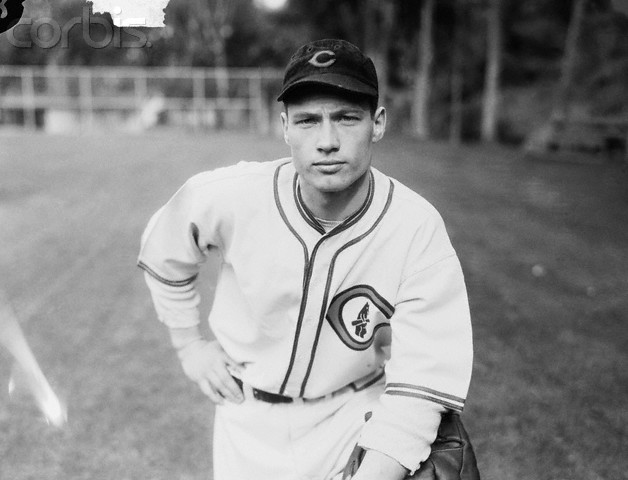
- A Dedication/ A Thumbnail History of the Cubs
- News and Notes
- Picture gallery
- Blog
- Marketplace
- more pics
- Ron Santo- A Tribute
- My All Time Cubs All Star Team
- The Al Montreuil Hall of Obscurity
- The Glenn Beckert Hall of Favorites
- Message board
- Books on Cubs
- The Short Unhappy Life of Charlie Hollocher
- Featured Cub of the Week
- Cubbie Memories
- the Cubs A through Z Project
- Adolpho Phillips-The Man Who Would be Willie Mays
- Didnt You Used to be Famous
- Links to other great baseball websites
- Mr Cub-A Tribute